August 2021

Daniël Laan is a landscape photographer from the Netherlands with a liberal take on the art of photography and image-making. His images are often dark, moody and ominous because his goal is to create art that makes him feel “lighter”. From his childhood years on, his fascination and appreciation of the natural world shaped Daniël’s life today. That's why he’s a big proponent of the Nature First philosophy and donates 10 percent of what earnings to conservation efforts. The discovery that photography has a cathartic effect on Daniël, came about in 2009, when he started taking photography seriously. Before that, matte painting and drawing were his primary creative outlets. That shifted to landscape photography shortly thereafter.
Daniel Laan 
In late February 2019, Isabella Tabacchi and I hosted our annual tour to the magical Lofoten. The Norwegian archipelago is known for its picturesque fisherman’s villages and vivid displays of northern lights, but this time around, we were met by challenges caused by an approaching storm. That meant a radical change of plans to work with the weather rather than against it while still offering an amazing experience to our workshop participants.

On this artic adventure, the challenge thrown at us came in the form of a developing hurricane that was slowly moving inland from the Norwergian Sea. The trouble started on day 1 of everyone’s arrival when flights got cancelled or rerouted. Due to a malfunction on the plane, me and my buddy who joined the workshop were flown back to Bodø, a Norwegian village that serves as a hub to the entire Scandinavian Arctic. Don’t get me wrong, the arrangements made by the Widerøe airline were great despite the delay.
We and our fellow passengers of the tiny turboprop aircraft were booked in a nearby hotel and the next flight to Lofoten was booked for the morning after. Now this is a prime example of why it is important to always arrive early when you’re hosting a workshop. So plan to be on location at least a day before you’re expecting guests and you’re one step ahead of inclement weather.

Daniel Laan 
The best moment of the storm was undoubtedly the sleepless night in our own private holiday home in Ramberg. It was the night the storm briefly unleashed hurricane force winds upon the snow-covered Lofoten. All our party felt the floor of the house being lifted up briefly at one point in the dead of night. But, what bends doesn’t break. These houses have seen many storms and are made of sturdy materials. We had a few nervous laughs at breakfast and got in the car for the morning shoot at a scenic hotspot in the town of Reine.
Those storms can make for truly fantastic lighting conditions. Especially when the clouds move away for a few moments for a glimpse of the rising sun. Sure it was still very windy, but we were caught off guard a bit by an insane gust at the height of being in awe of the brief light. It was all fun and games watching those clouds swirl, but then a hundred-mile-an-hour wind knocked a couple of us off our feet.
My Guru backpack holding my gear tumbled a few feet through the snow. Luckily for both the Guru and our group, the railing at the edge of a cliff prevented potential (heart)ache. After this experience we drove to Skagsanden beach. With the wind buffeting the coastline, we waited for the perfect moment to catch a wave breaking on the rocks to illustrate the raw power of the Atlantic. We used rain sleeves to keep most of the water out of camera and lens, but it’s pretty inevitable that salty water leaks in anyway.


Daniel Laan 
Food for me is always a challenge when shopping abroad. Since I’m on a plant-based diet for primarily environmental reasons, deciphering the ingredients can sometimes take a while. I somehow developed a lactose intolerance during the years I was off it and this time I made a boo-boo buying the wrong energy bar: the result was less fun than the story is in hindsight. On the other hand, it never hurts to ask about food allergies in Norway. All restaurants I’ve been to have been truly accommodating, even during trying conditions like the one we faced on this adventure.
At one point things got particularly demanding. It was right after the visit to Skagsanden when photographing out in the elements was still fun. We drove further to the north and a queue was forming to cross the bridge. Most, if not all bridges were closed due to the high winds. And as we were driving a full-sized van, we heeded the dangers. A digital sign kept us updated on the measured wind speed. It was subsiding, but still read 33 MPH. We had some supplies with us to sit out the storm, but after a while of waiting and snacking, the allergy started to kick in with no restroom in sight. We drove back a bit to find a truckstop where everybody could be relieved.
Dusk was settling in however, and we were all looking for a bit more substantial sustenance after this long day of primarily waiting it out. The challenge now was to also entertain the participants while checking the traffic advisory for bridges opening.

Daniel Laan 
Everytime I visit the magical white world of Scandinavia, I discover new challenges as well as fresh photographic opportunities. The best advice I can give is to have a flexible attitude, but also to communicate your flexibility well in advance of any workshop you might host yourself up there. It’s better to downplay expectations of clear night skies and possible northern lights than to offer certainty of aspects you cannot control. Norway, but Iceland and Finland too have much more on offer than just a glimpse of the green lady, so it’s best to incorporate those photographic opportunities in the workshop. Even so: if you leave wiggle room both in timing and location of your shoots, you free your mind to do what you do best: shoot amazing landscapes that you did not expect to find. In the end, that’s truly what your participants are looking to learn from you.
The true challenge is not to weather the storm, but to have your customers realize that they’re really looking for originality and vision in their work. What better opportunity is there when the elements force you to get outside your comfort zone? Moody landscape photography is my bread and butter, as I visualize the viewer to be in some sort of fantasy world. It’s no secret that I am heavily influenced by the aesthetic of the Lord of the Rings and Magic: the Gathering.
My goal is never to improve upon the light on the landscape, but to actualize a vision that I carry within. That’s why I don’t record the landscape, but use it as a canvas to paint a mental picture that I can share with the world. I’m currently writing my second book which treads way into detail about this approach. Also coming up are new tours to Lofoten, Iceland and the Dolomites of which I’m as much excited as before the pandemic.
You can find Daniel's work, books and workshops at his website.
Fabio Silva Luis, graduated in Nurse Sciences, 5 years ago and found his passion for hiking and landscape photography. While he was doing his Erasmus in Oviedo – Spain, Asturias which is such an incredible place for nature/hike lovers, he started his hiking and photography journey. Fabio always had an artist vein to explore, since he was 8 years old Fabio loved drawing and used his parents film camera. Now he's 32 a Portuguese living in Italy for the past 3 years. Ever since he found this passion, he's been exploring the nature in her rawest format and untouchable version, capturing her beauty as he saw her, trying to immortalize some moments that will capture the people's attention for nature and give her the right respect and love.
Last year I've met Christian Bruth in the Dolomites since that time we’ve connected through Instagram talking about when we could meet again and explore other natural panoramas. But due the worldwide pandemic we were living was not easy to come with a date. After some time, we’ve finally come with a date and a location to met again, from the 23rd until the 30th of May in Switzerland. This trip meant a lot for me especially in this occasion with all the lockdown the crazy work rhythm’s I needed to relax and exhale all this contaminated air, finding my inner balance by connecting with the nature and the mountains.

For this adventure, I’ve decided to change the way that I travel by challenging my self by carrying only the Tilopa 50 L for the entire trip where I’ve fitted my photography gear has my Sony A7iii, my lenses (24-105G, 14-24 Art and my 100-400GM) has well my Mavic Air 2, a Gopro H7 and my tripod. A part from my photography gear I’ve fitted also 5 T-shirts, 1 mid layer, Socks, underwear, a rain poncho and accessories (batteries, headlamp, etc…). My packing plan for this week was to plan day by day where we will be, where will we sleep, the weather on the location. I was not worried about the quantity of gear that I was carrying because I could always wash it on the go and at the end of this adventure, I’ve realized that all this fear was only on my mind and in the reality traveling with less is much easier that we’ve thought, this minimalist approach for this trip made me enjoy much more the places I’ve explored by giving me more freedom of movement.
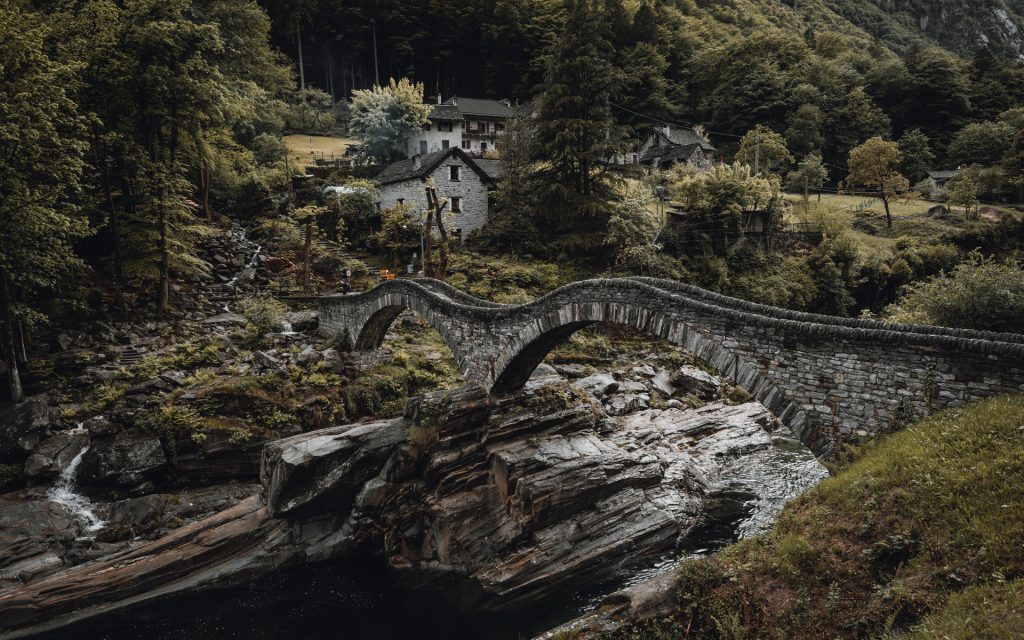
Fabio Silva Luis 
We’ve started our journey on the 23rd with a road trip from Zurich to Appenzell than hiking 16km to Fälensee and Saxer Lücke. We’ve done the return hike during night and we were death tired but was such an amazing day and experience. We’ve arrived at the car around 11pm having the energy just to eat something and prepare to sleep for the next day sunrise. We have woken up at 4:40am and was still dark outside. On the very start of the day we did a 30min car drive and a 1,5 hour hike to the beautiful lake Seealpsee, that was well worth it. After having our lunch we needed to move to Ticino our next destination, where we’ve found such an incredible atmosphere with the low clouds, rain and the hundreds waterfalls created by the melting snow. We’ve been there for 24hours to enjoy Valle Verzaska and Foroglio. The next day we spent it at Interlaken where we’ve visited Rosenlaui, Lauterbrunnen and Oeschinensee. We had such a pleasing surprise during the hike to the lake view point with an intense fog. We came across a group of Apex and this was the first time that we both had seen this particular creature in their habitat, they only are friendly until you cross the safety distance (around 10m) where they make a particular noise to let you know that you’re too close.
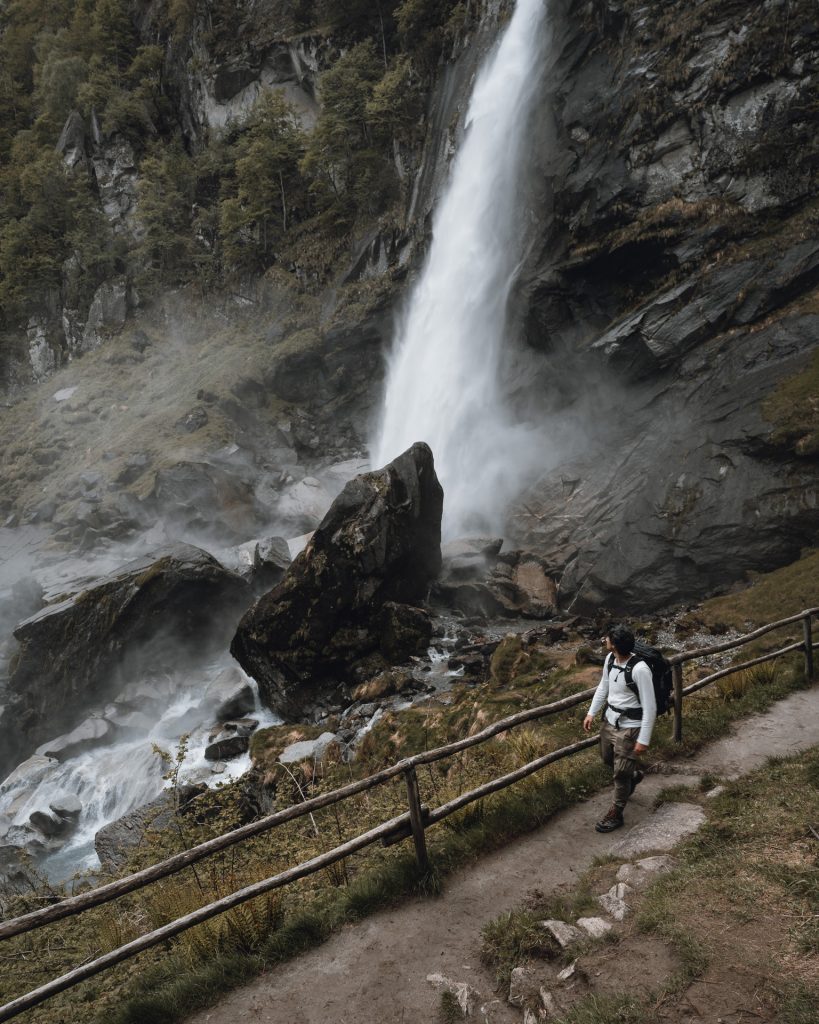

Fabio Silva Luis 
The craziest adventure was yet to come in Zermatt, we wanted to do the 5 lakes hike and watch the sunset at Stellisee but to reach we needed to do 9km hike, that wasn’t that bad has the descendent 9km hike to the hotel where we took like 3,5 hours to do in a pitch black night. Unfortunatly, my last day in Switzerland was arriving but before I leave there was one last location to explore Fronalpstock and a meeting with other photographers and nature lovers. Now that I’ve talked a little bit about our journey in Switzerland, there was one last thing that I’ve missed out and that's the food. To be honest we didn't have a great schedule to really enjoy a proper lunch and dinner because we were always on the go. But the breakfast was amazing with a lot of variety from salt to sweet options. Yet with the lack of time, we were lucky and had a tipical dish from Appenzel called Raucherwurstli mit kartoffelsalat that was like and potato salad with a bittersweet sauce and a big sausage.
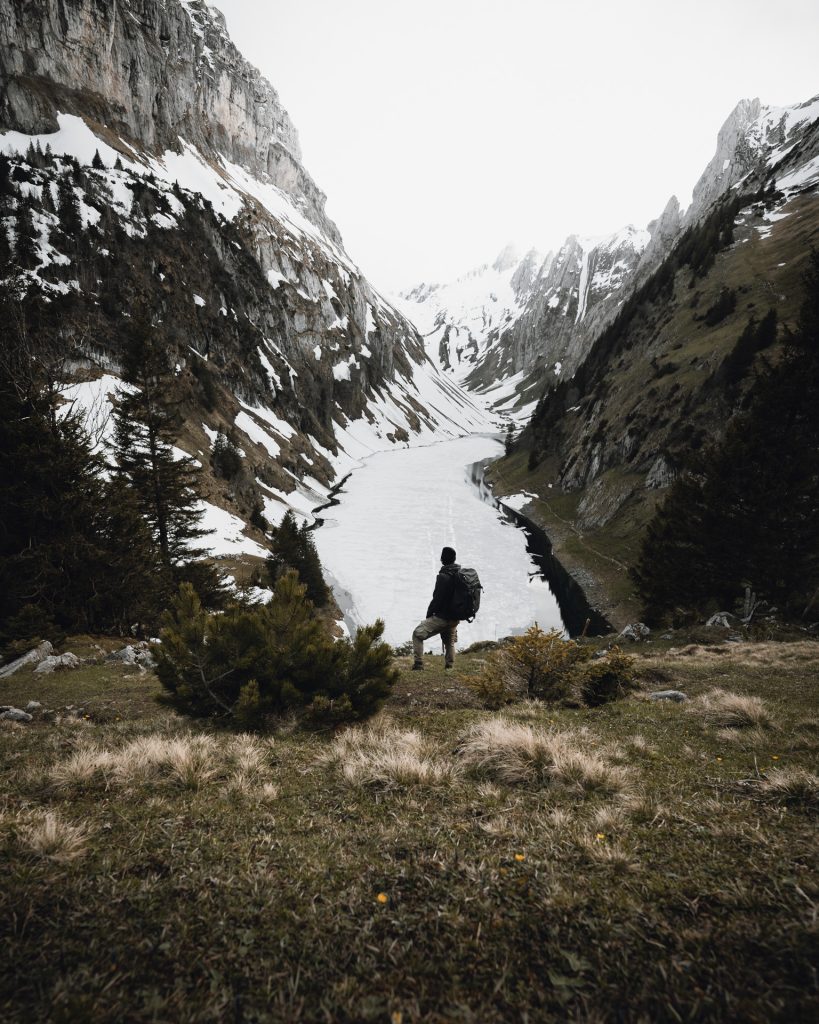
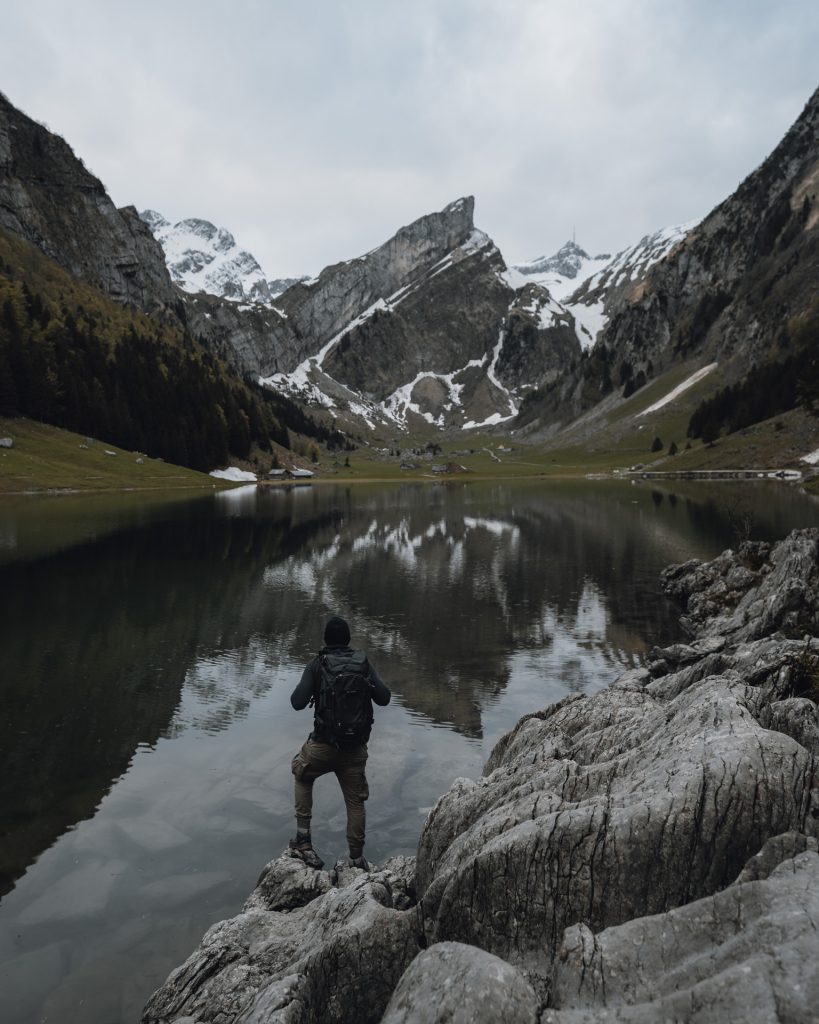
Fabio Silva Luis 
With the limited time that we had its important to plan in advance your trip, day by day, the location that you want to explore, taking in consideration the time needed to explore each location and consider always a plan B. Making a prediction on what you will need for the vacation in terms of cloths, gear. Making sure that you bring warm cloths in case of high probability of serious cold. Checking the weather for each day is a good way of planning the cloths that we might need. If you’re like me and like to be on the right place at the right time to capture the best image possible check the best times of the day to a “x” location, some are better at sunrise others at sunset. an use this widget to input text into the page.
While you’re web-scouting location for your trip try to connect with some local they know better that us the location and can give us really good advises. In terms of gear bring what you feel comfortable with, or with what your project demands, making sure that we don’t bring unnecessary gear and weight. Because the most important think while travelling and hiking is the weight, less is more.
Can’t wait for my next adventure, I’m already thinking in some location like West USA or Patagonia but let’s see how all this Covid situation evolves until September. Meanwhile I will keep creating content on my area Sicily/Italy and taking care of people as a nurse.

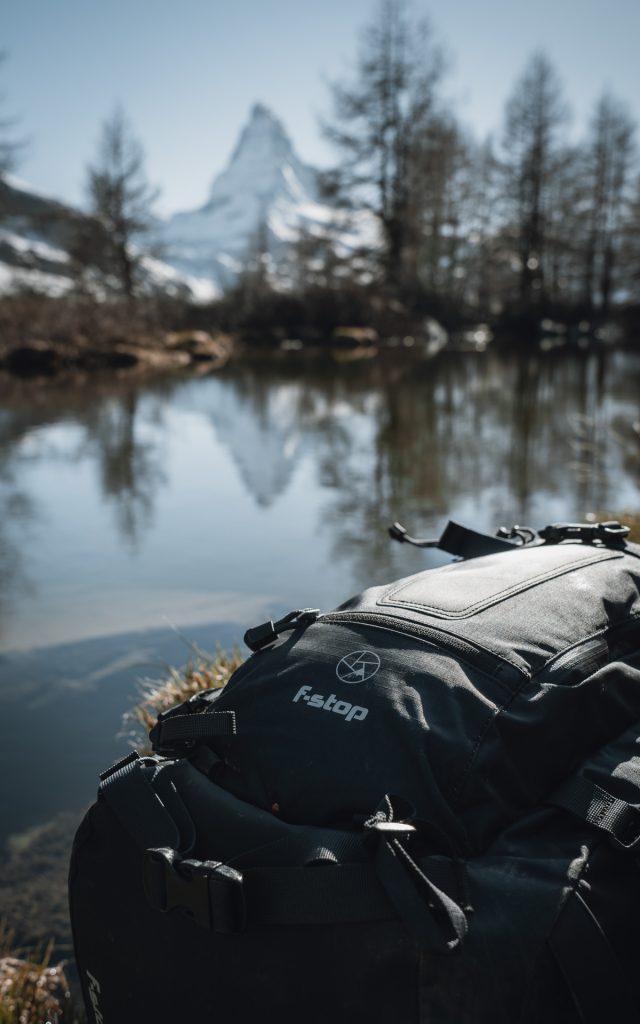
You can find Fabio's work on his Intagram and Youtube channels.
Tiago Sardo is a 24-year-old Portuguese travel photographer who's passionate about creating content (photography and video) and loves to travel and live different experiences. What he likes to photograph the most are landscapes that, in some way, surprise him and enjoys filming content that somehow tells a story.
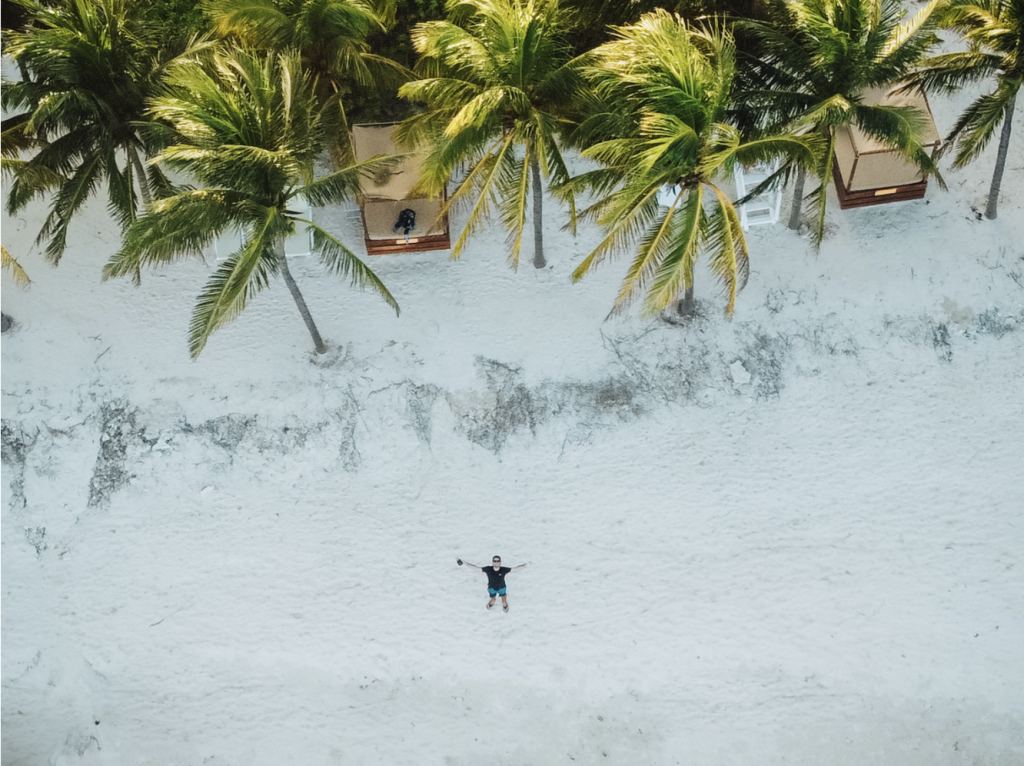
Tiago Sardo 
Last July, between the 3rd and 11th, I had the opportunity to leave Europe for the first time in my life and spend a dream week in the Riviera Maya, near Playa del Carmen, with my sister and my mother. The three of us hadn't traveled out of the country since 2014 and we thought we needed to have these days to ourselves and go back to having good adventures. My mother had already been to Cancun on her honeymoon with my father, but more than 25 years after their marriage, she would like to go back to see what had changed and remember what had stayed the same.

Tiago Sardo 
A trip like this never happens without overcoming challenges, however small. Fortunately, everything went well throughout the trip, but even so, I consider that the pandemic was the biggest hypothetical challenge we had to face. Traveling in a pandemic time is not easy. At the time, none of us were vaccinated and, although we weren't asked for tests to enter Mexico, we needed to take a test to return to Portugal.
We wanted to make the most of the trip, but we had to be careful not to be prevented from returning and having to stay in a hotel in a different country, on a different continent. That couldn't even happen, because we had commitments in Portugal, namely our jobs. Fortunately, at that level, everything went well and nothing happened to us, but the mental challenge of 'fear' was our biggest obstacle that, even so, did not stop us from enjoying the trip.

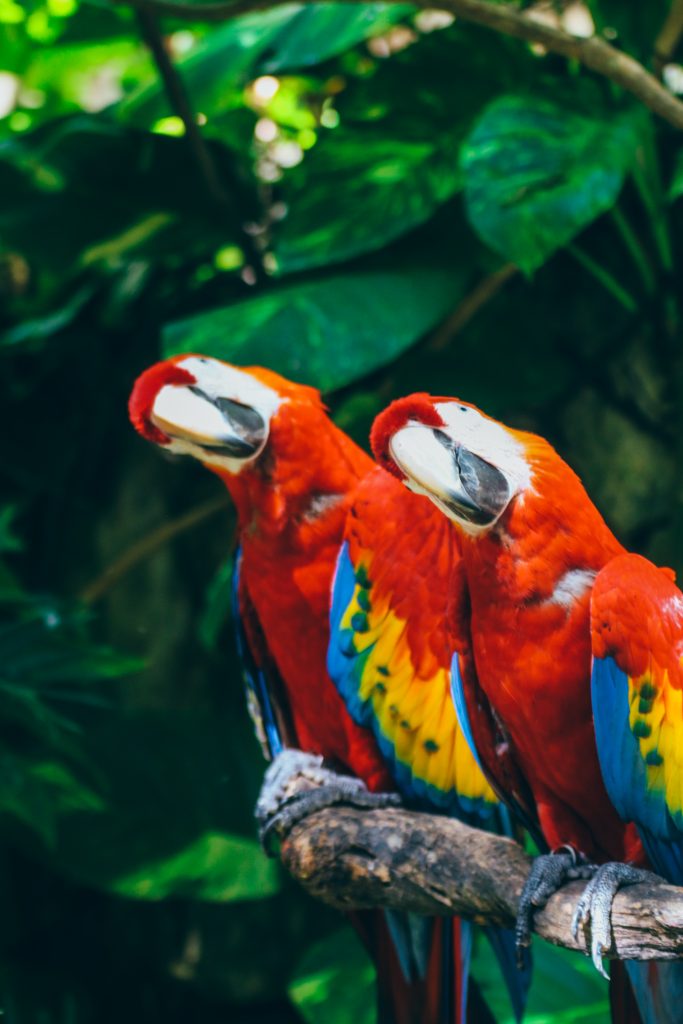
Tiago Sardo 
When we chose Riviera Maya as our destination, we did so for several reasons. One of the things that motivated me to go was the possibility of having some unique experiences so far in my life, namely seeing Chichén Itza – one of the 7 World Wonders – and swimming with whale sharks. I managed to do it, but luckily the trip was much more than that! I swam with cat sharks, visited the incredible Xcaret Park, did a purification ritual with a Mayan family and enjoyed great moments of celebration and relaxation on the beaches and pools of the Caribbean. It was really a dream! Oh and I still ate crickets, without a doubt what I liked the most when I went there!

Tiago Sardo 
• Pay attention to the amount of sargassum on the beaches. Unfortunately, we went at a time with a lot of sargassum and that prevented us from enjoying much of what some beaches had to offer.
• Analyze the waves of the sea, before choosing the day to go swimming with the whale sharks. This activity was complicated because there was a certain swell and we were all very seasick on the boat.
• Use the Revolut card, so you don't lose too much money on currency conversions. Still, if you don't want to use the card, there are many currency exchange offices scattered on the streets. If you go to Playa del Carmen, on 5th Avenue, you'll find several, with different conversion rates. It's a matter of choosing the most rewarding one.

Tiago Sardo 
And last but not least:
• Enjoy every second of being there, because I missed that place from the moment my plane took off back to Portugal.
As a travel photographer, this adventure was heaven for me. I was able to have fun and enjoy every second, while it was very easy for me to create content, whether in photos or videos. Fortunately, I had a very sturdy backpack from f-stop (Guru 25 L UL Camera Backpack with One Medium Shallow Internal Camera Unit) that allowed me to take my Canon 750 D with two lenses, as well as my DJI Mavic Mini and my DJI Osmo Pocket. Since then, I don't leave my suitcase for nothing when I travel!
You can find Tiago's work on his Instagram and Website.
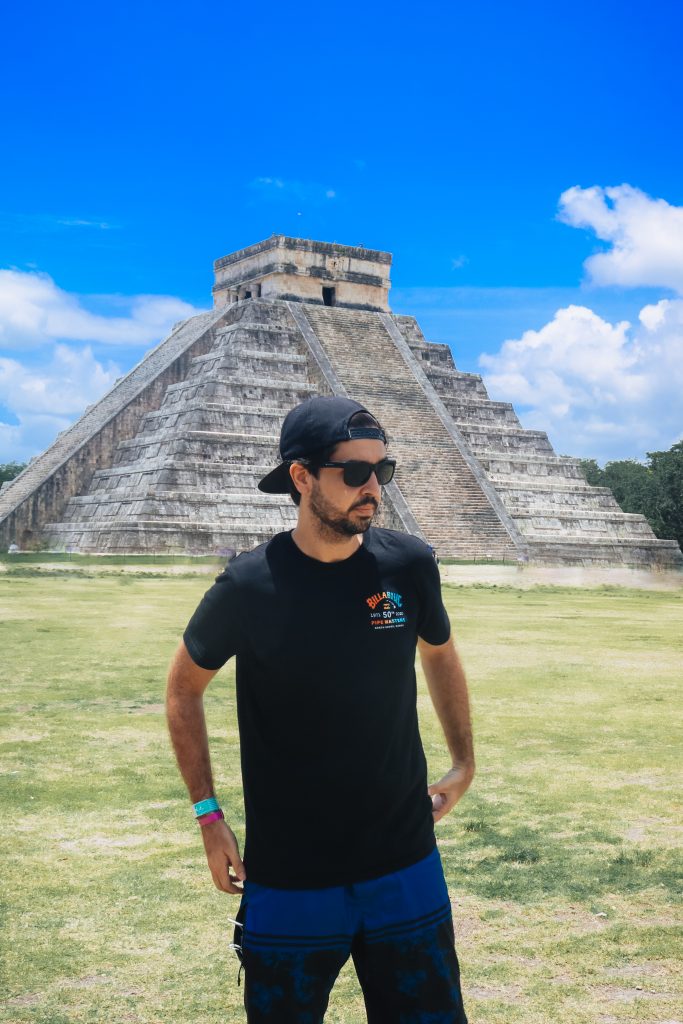
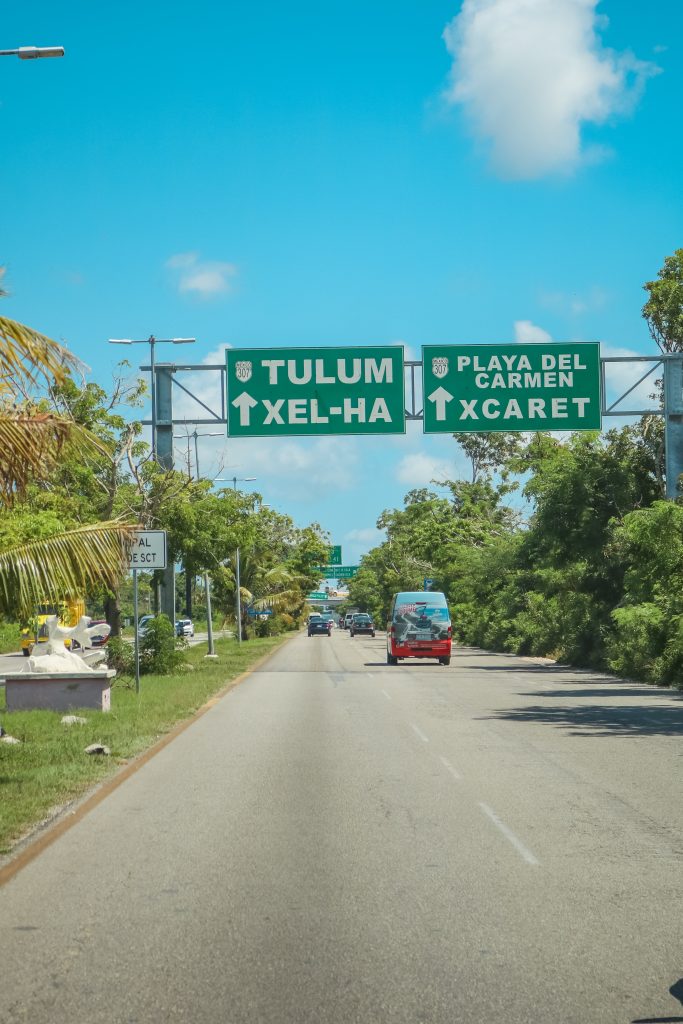



David Malacrida has been working as a media content creator since 2009. He notably worked 6 years as a photo editor for Downdays magazine and 3 years as a content creator at Like That, an event-creating agency based in Annecy and active in the French mountains. At the same time, 10 years of independent work are emerging for many clients such as tourist offices, ski resorts, outdoor brands, film productions, etc.
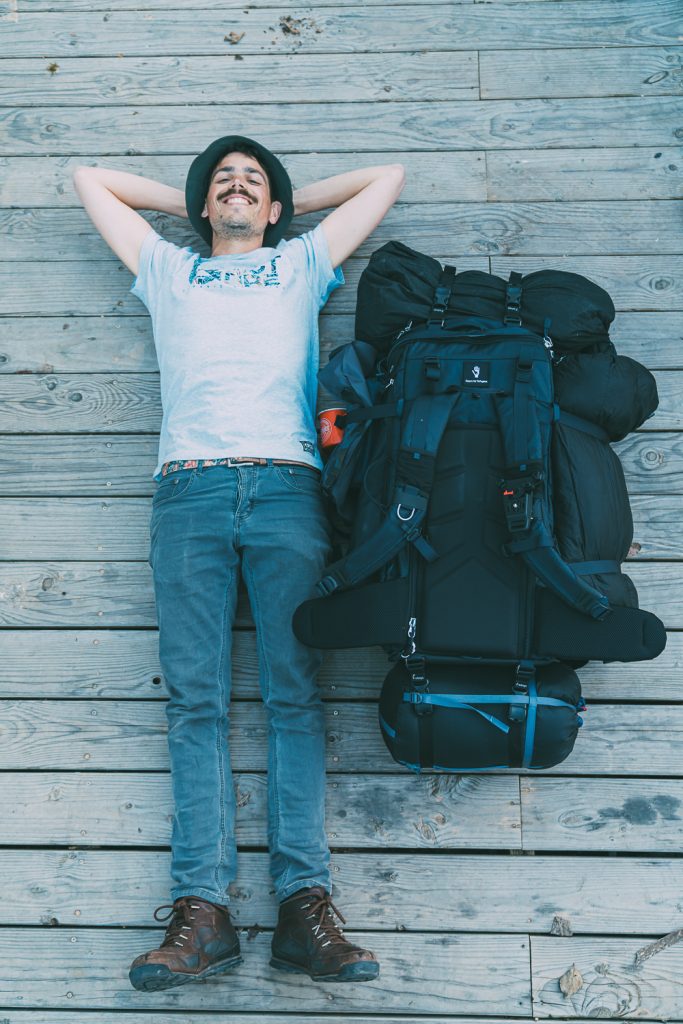
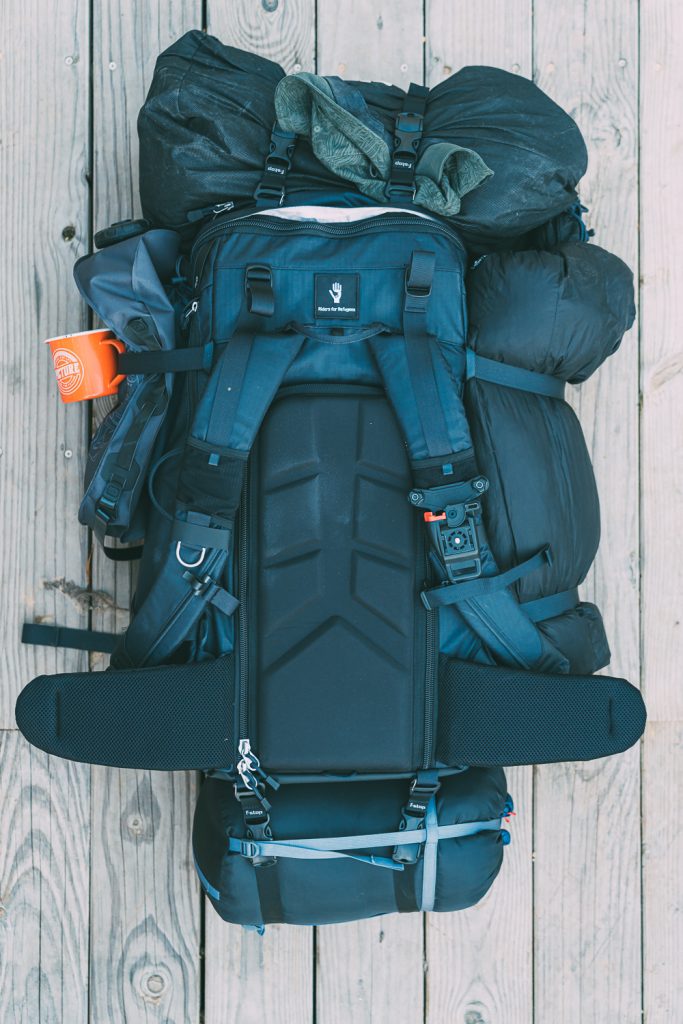
The COVID-19 pandemic, like global warming, has forced us all to change our old habits and to take a new look at our immediate surroundings. In today’s world, looking for adventure in your own backyard makes so much sense. In June 2020, I proposed a movie project based on a local expedition. 10 days in the mountains featuring riders and production crew with the goal to explore an outstanding area and make the best of it.
Alone at my office, I’m preparing everything to make our daily first crew job easier : packing the backpacks. For the filmers and me, packing one week of needs and the camera gear is a real challenge and it’s taking around 4 hours and some hard choices to nail it. For the food, we use the dust bag of f-stop in which the pack is delivered and attach through the straps. For the clothes, we roll everything in our biggest jacket and strap it on the the bag. Using straps and gatekeeper to create an original piece of art weighing around 30 kilos and trying to carry it at the office is already hilarious and scary…
on the photo below - Pierre with his 70 L Sukha
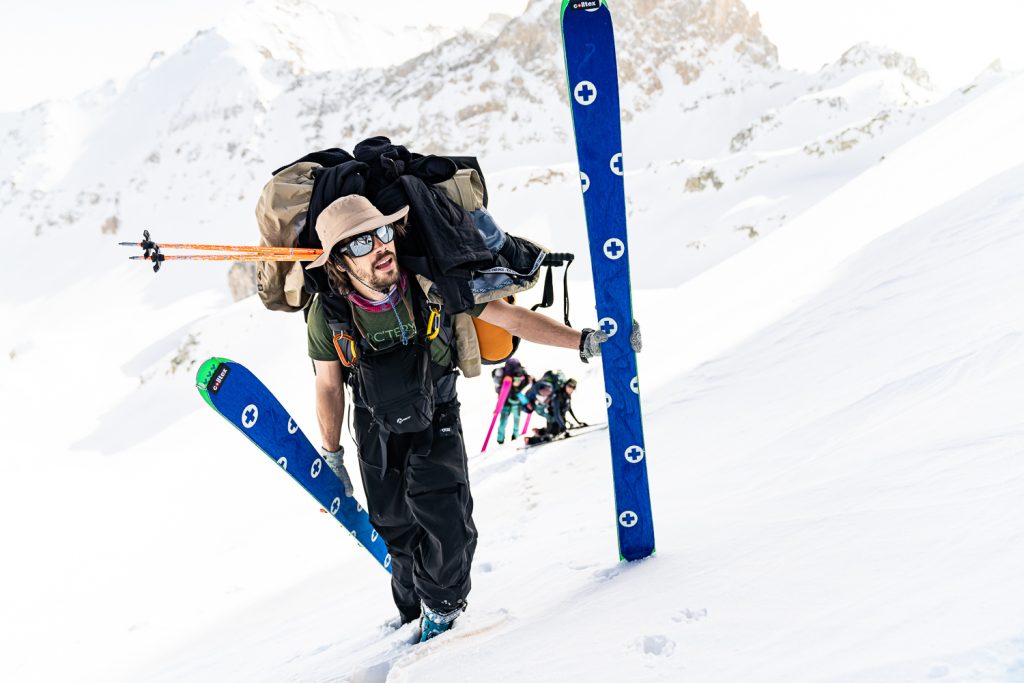
The departure day started with 500 meters on the flat to join the train by such a desperate conclusion : "our bags are way too heavy" - and a good point : "We should be strong enough to carry them two days." This departure day is also the first day of shooting with the question of : « how to be able to use the camera while carrying the backpack Pierre and Jake decided to have another small pocket in front of them and I choose the shoulder attach. Still every occasion to put the backpack down is restful as painful such the bag is pleasant ton see on ground and hard to put back on the back.
3 hours of train and stuck down couloirs later we join the rest of the crew and head up to the mountain by car. Ready to put the skis on. At the end of the day, resting at the shelter we are so glad to made it, to hike 600m high and around 7km length with our houses on shoulders helping and supporting each other and creating a real groupe by the difficulties.
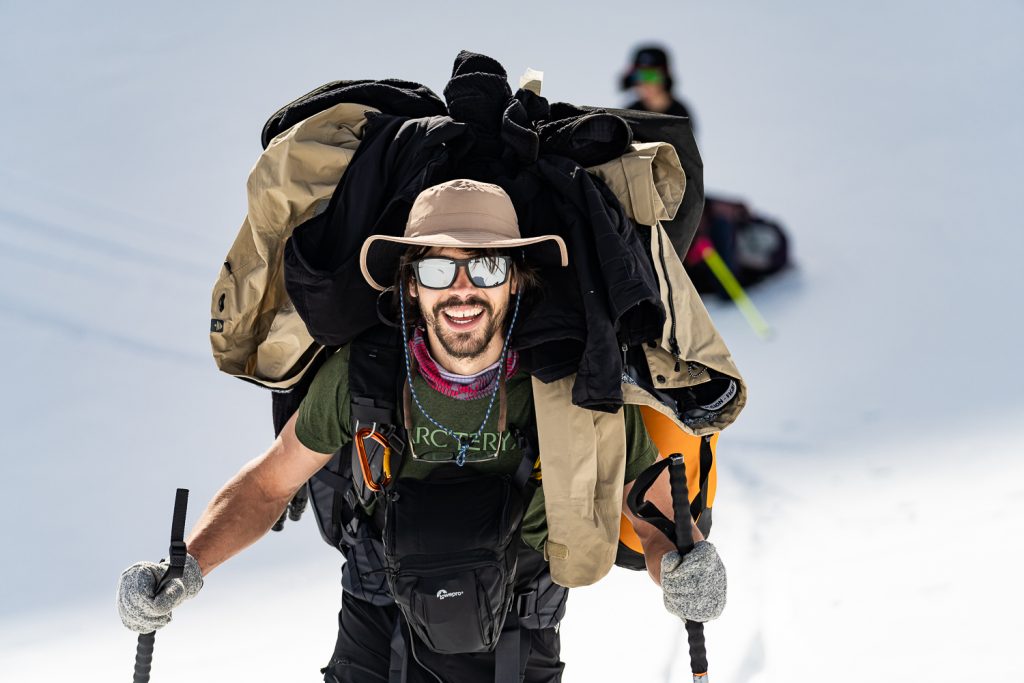
The next morning we leave the shelter two dry food meals and 3 energetic bars lighter ( which sadly makes no difference…) and head up to our final basecamp spot.
The difference to the first hiking day ? A 45° steep icy face to ski down and quite a contest of who’s the best sliding snail, ( I think I lost ), and the incredible feeling of letting the backpack on the ground and taking stuffs out that we will not have to carry in the future.
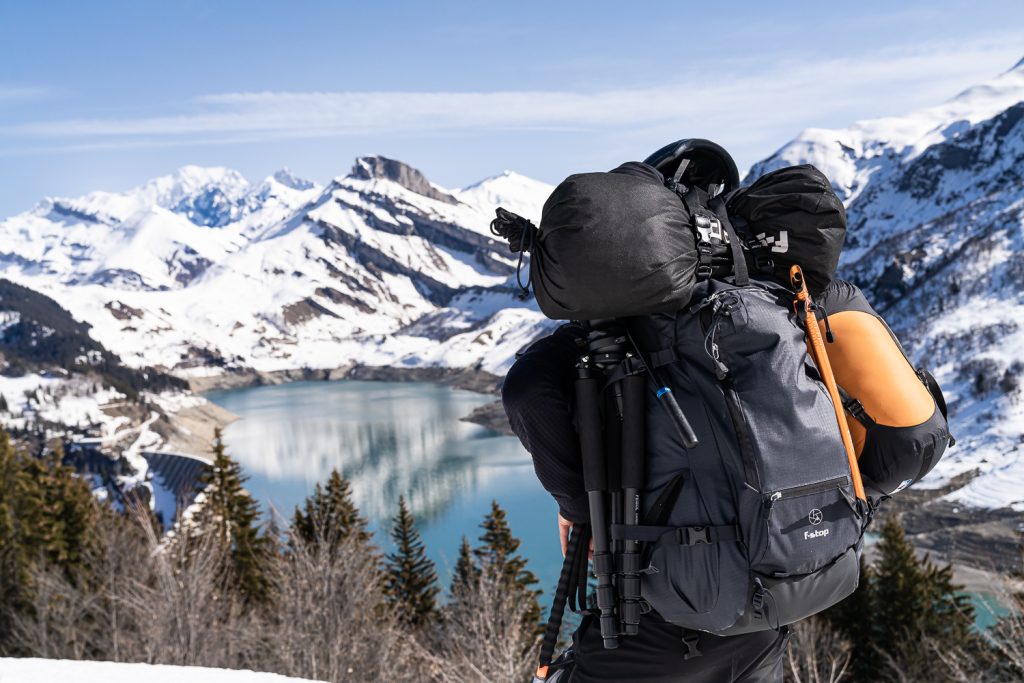
I’m waking up for the first time in the place I dreamed about and the view is gorgeous, the memories from our first outstanding sunset is still very strong in my head. I can’t believe it will be our daily life. I can’t believe 7 others people followed me in that adventure to share more than thinking and skiing, but a slice of life.
on the photos below - Pierre with his 70 L Sukha

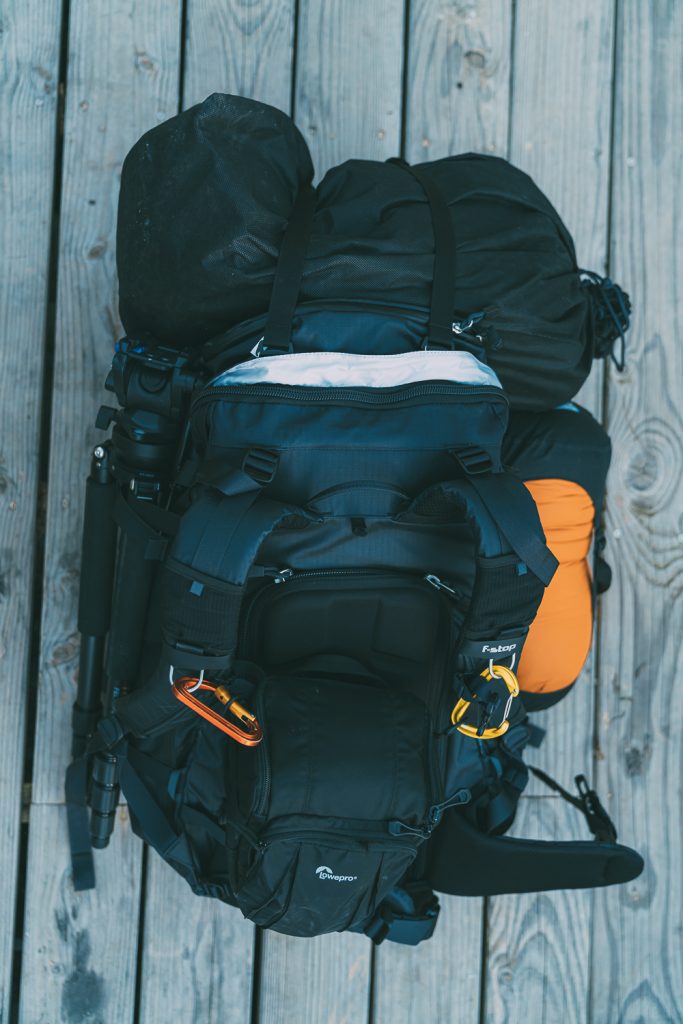
From now our schedule is simple : We decide every morning what we want to ride and shoot, go ahead, come back with the footage at the camp eat and laugh and go to sleep. Of course there would be way more to describe here but there is a movie about it. Check it out below.
On the producing team side, the pleasure to get back our normal weight camera bag ( around 10 kilos ) is a real pleasure and I think we didn’t even feel it the first morning leaving the camp. Without 10 kilos of food, the laptop for one, the battery tank for another, our workflow came back fast.
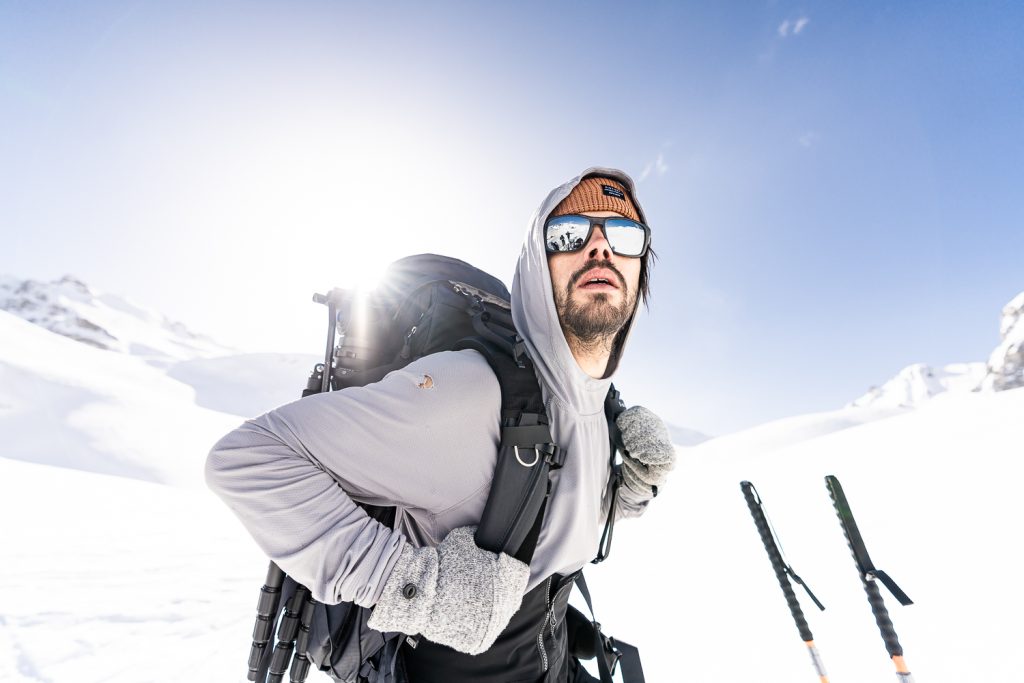
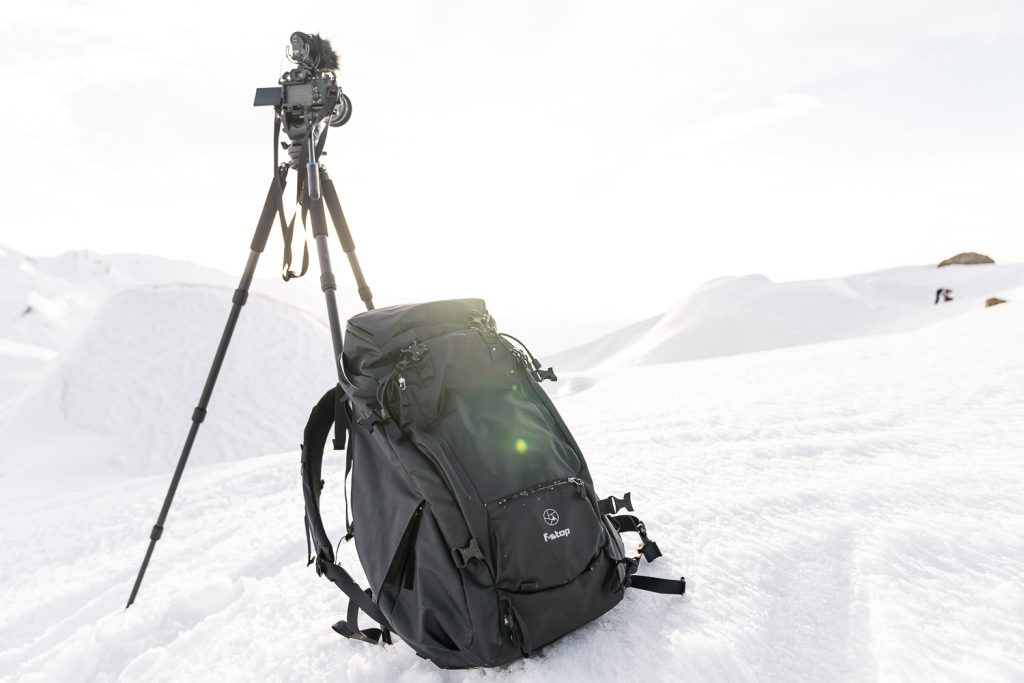
The last day, after taking the time to enjoy the landscape and catch the last piece of memories around the camp we clean the place as if only tracks on snow could tell we were here and say hello back to our « just less » heavy friends for the trip back. 4 hours later, drinking beers together, I’m thankful as sad to see this adventure ends.
on the photos below - Jake with his 70 L Sukha
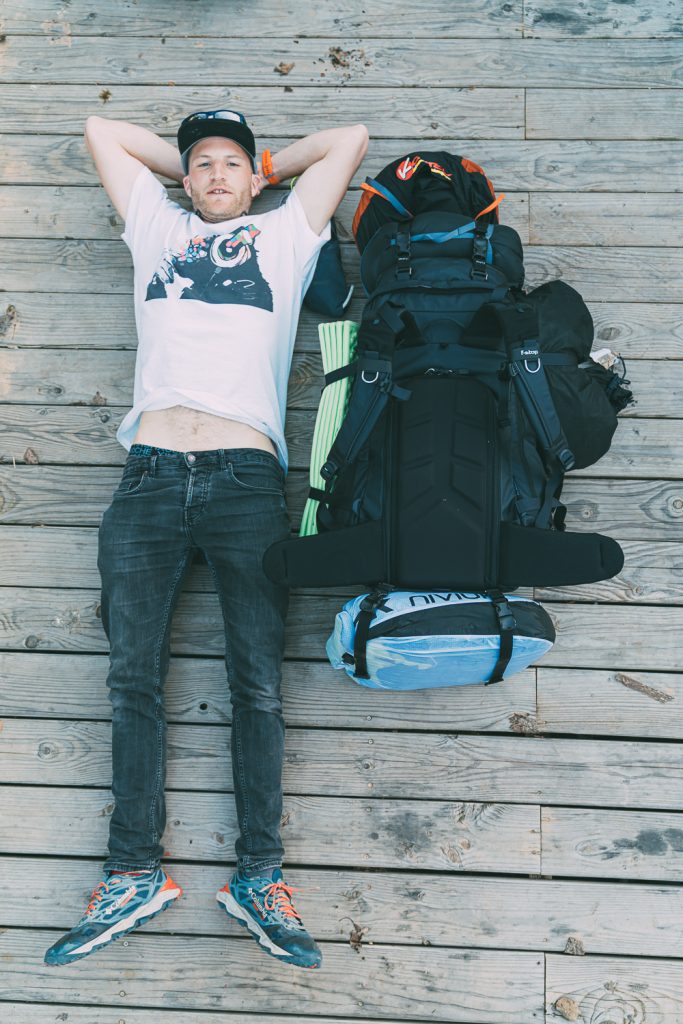
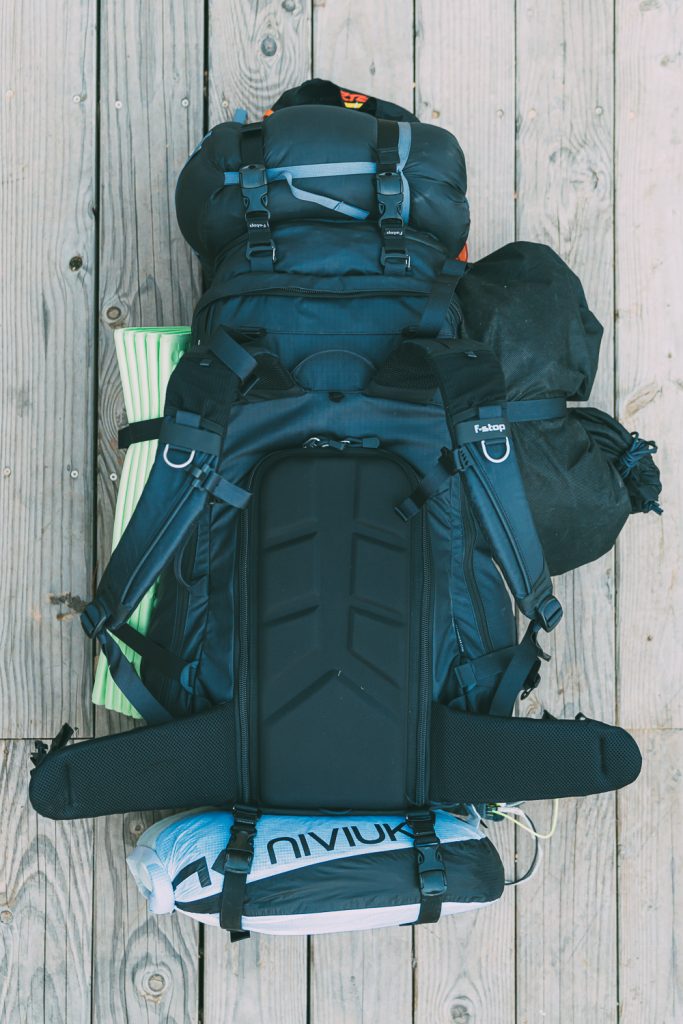
In every adventure and in this one in particular, the backpack is one of the key point and definitely your best friend. Without sherpas, we had to think from the beginning the opposite way with the question : « What can we carry? » and not « What do we need?» and if it took 4 hours to pack, it took days to decide what to take and organise this adventure. It was way more than just a heavy back pack story of course but this part was definitely the only hard one we had to deal with so let’s get bad ass and keep the focus on that point…
THE F-STOP AND CAMERA GEAR USED:
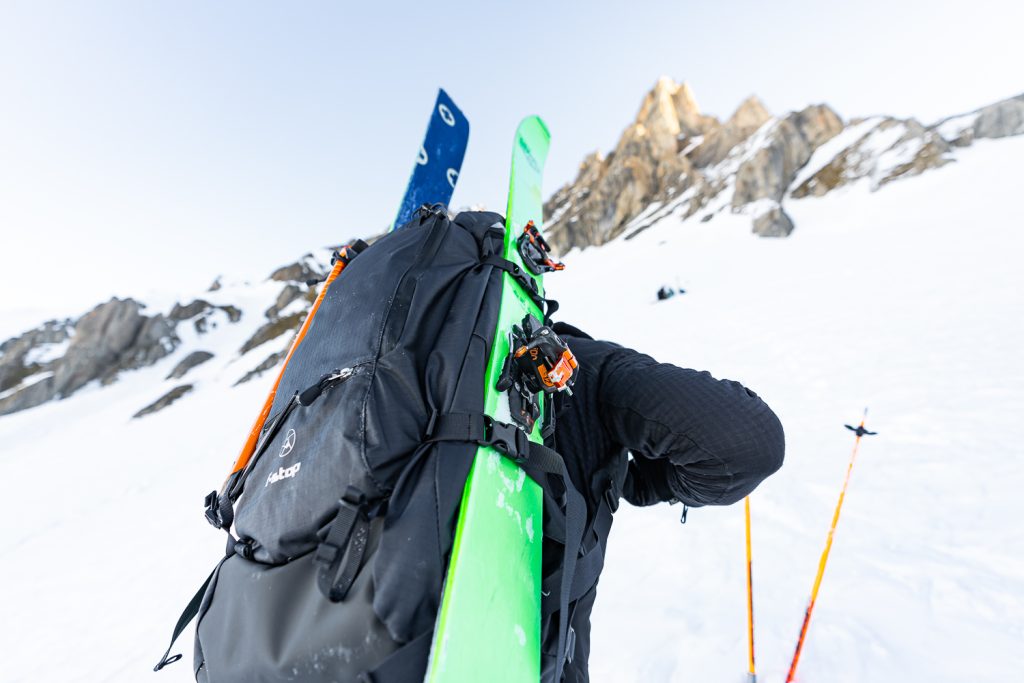

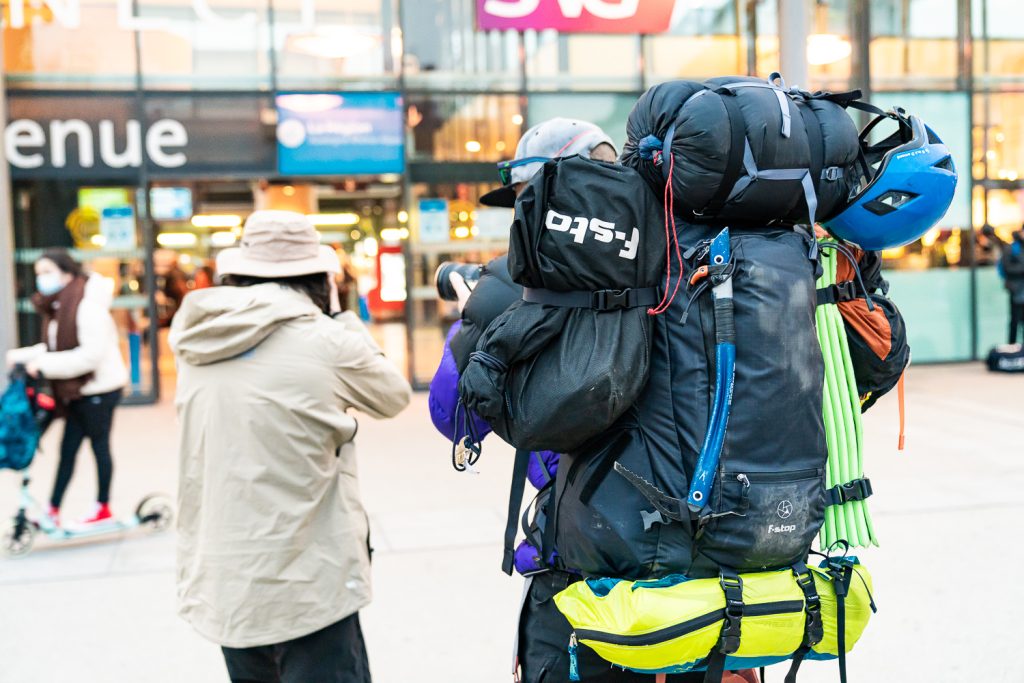
DAVID
JAKE
PIERRE
STAN EVANS, TESTED THE LIMITS OF A TILOPA DURADIMOND® IN SNOW AND ON THE BEACH
Stan Evans is a long-time f-stop customer, and he recenetly completed a challenging project for Subaru. Stan owns Stan Evans Photography. Stan escribes himself as "a portrait photographer that has a deep passion for portrait, lifestyle, athletic, and motorized imagery – probably in that order." Stan's truly unique images can be viewed as a narrative, and representative of his unique perspective.
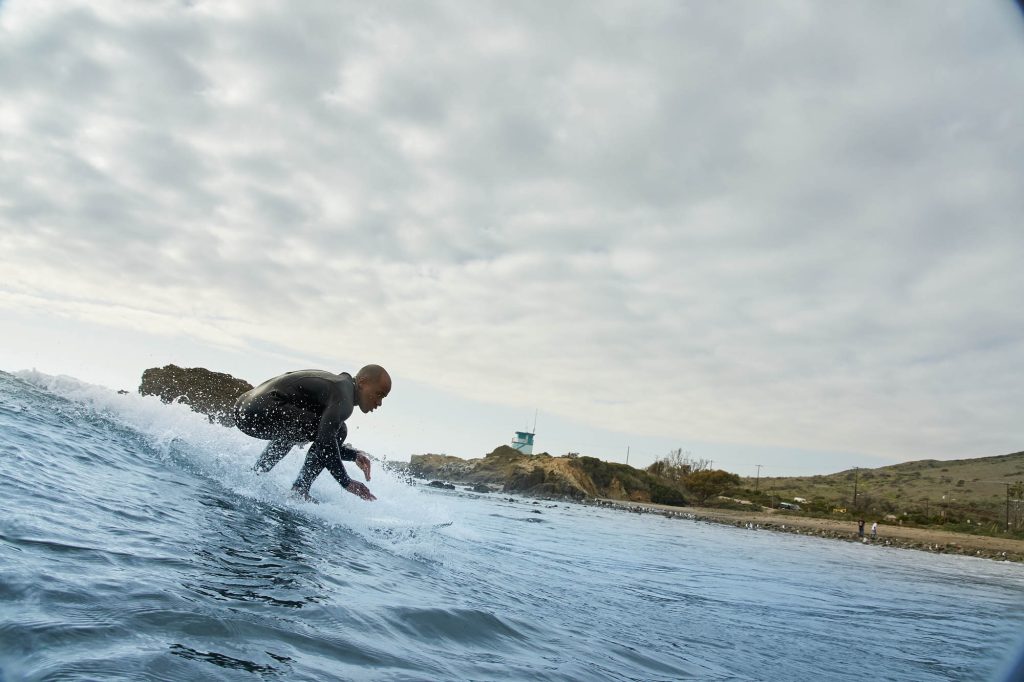
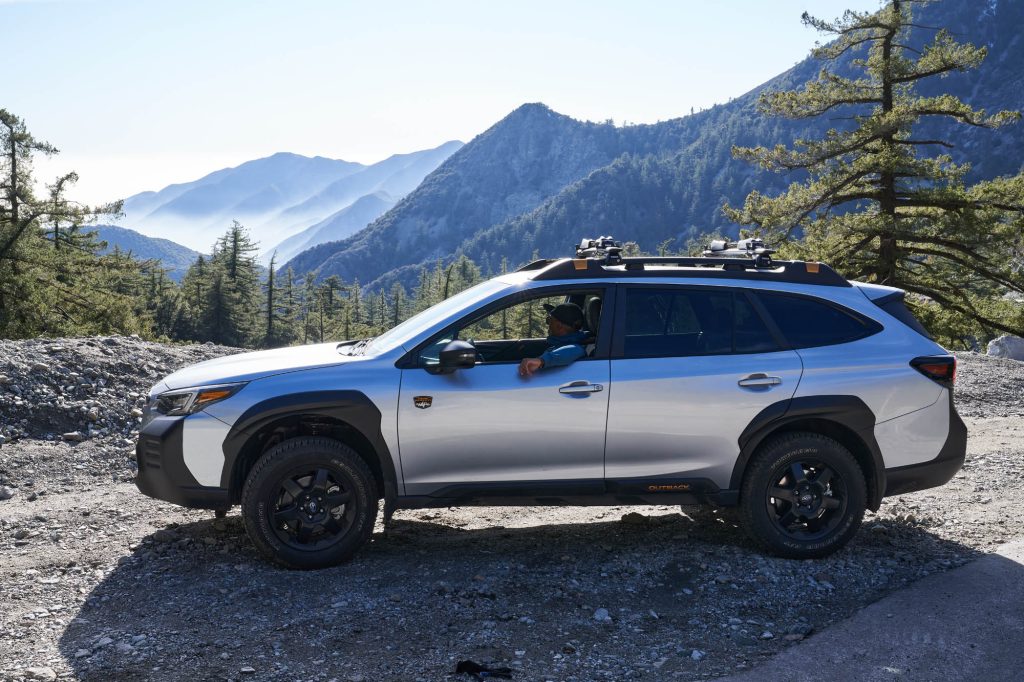
Q. What motivated you to become a professional photographer in the first place?
I grew up in Alaska and was surrounded by the beauty of nature so it just seemed natural to want to document it. I had a photography teacher in high school who kind of saw my unpolished potential and instead of giving me all the reasons I shouldn’t be a photographer she actually encouraged me and helped present a path. From there I went to college at Montana State graduating and began working in the outdoor industry. Eventually I became more enamored with the Commercial and Advertising side of imagery so I ventured to NYC, Learned a lot working with Monte Isom, Annie Leibovitz, Mary Ellen Matthews and eventually made my way to LA.
Q,. Tell us how you connected with Subaru for this project?
Actually, my friend Andrew Alexander King put me up for it. He had found out about me and my past through my podcast - The Social Studies Show. He sought me out in LA and was curious about mentorship in the media. He’s become a shining light on his own for diversity in the outdoors so when it came to telling his story through Subaru’splatform we found a good way to collaborate with our respective talents.
Q. We see in the images surfing and snow – that’s quite a wide range of environments. How did you select your gear for these two locations?
Oftentimes the environments and the physical demands of a shoot dictate equipment. Things have to be dependable, lightweight and necessary. The equipment then is chosen on a sliding scale based on vision, how you are getting to location and how many people are in the production crew. These locations are often volatile. You can drown or get hypothermia or frostbite just trying to get a photo so a lot depends on the photographer's experience in the outdoors and safety.
Q. Which f-stop bag did you take to each, and what did you pack in it(or them)?
I used the Tilopa 50L DuraDiamond in both environments. It’s very rugged and the camera gear needs protection, but also I needed room for extra layers, water, food, attaching crampons and Ice axes for snow. Flippers, underwater housing, wetsuit and goggles for water - so the backpack needs to be modular and easily arrange the padding due to the task at hand. It’s also comfortable and easily adjustable




Q. What was most gratifying to you both personally and professionally about the Subaru project?
I think just being able to hire a diverse crew. It was a hard pressed effort to be the first Black Professional Photographer in the winter outdoor space and now being able to convert that to the commercial space. (You can read a feature article about Stan and his journey at Snow Boarder Magazine here.) To be able to Work with a dynamic person like Andrew and then be able to bring more people in and up like the DP Dennis Flippin and my assistant Marrice Hill. It extends the knowledge and puts money into the culture. From there Subaru taking Andrew’s story, distributing it and elevating it is the thing dreams are made of. A majority of Mainstream audiences don’t know Black stories or where we come from so brands taking an interest and then letting us tell our story from our narrative with Black Directors and Photographers is a huge step. It takes action from performative to progressive.
Read more about Stan at Voyage LA.



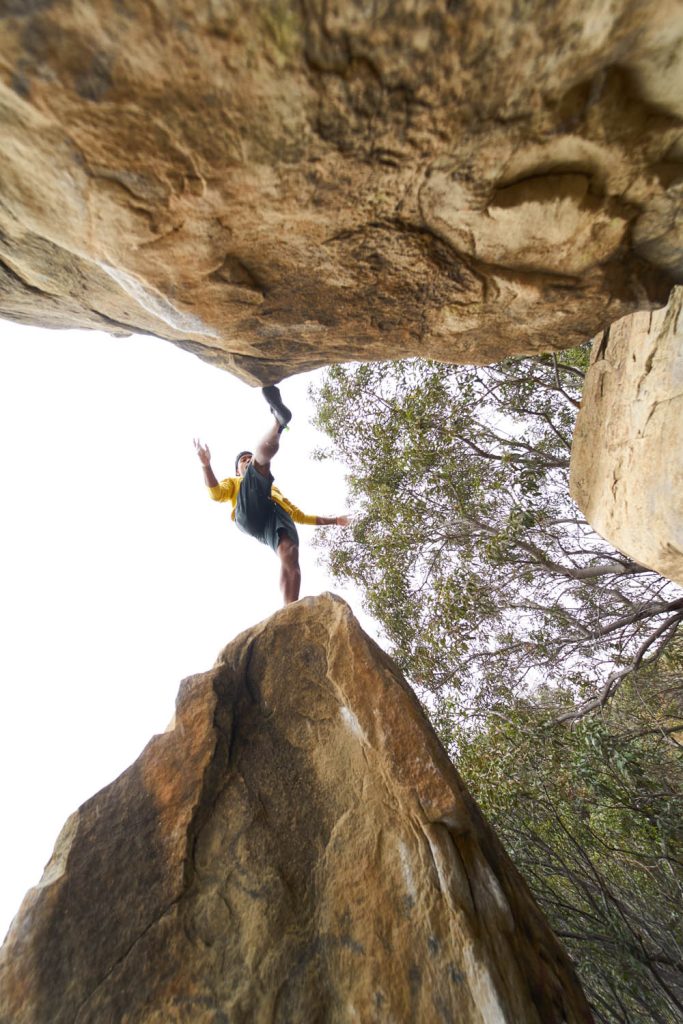



Photographers are often referred to as story-tellers, but what of the stories that inspired them to pick up the camera? For f-stop Amabassador, Maria Sahai, the tales of the far North she was told as a child have stayed with her, and underpin her love of exploring the Arctic. In this feature, through her words and images, Maria takes us on a journey into the deeply personal relationship she has with the Arctic she photographs.
Words and photography: Maria Sahai
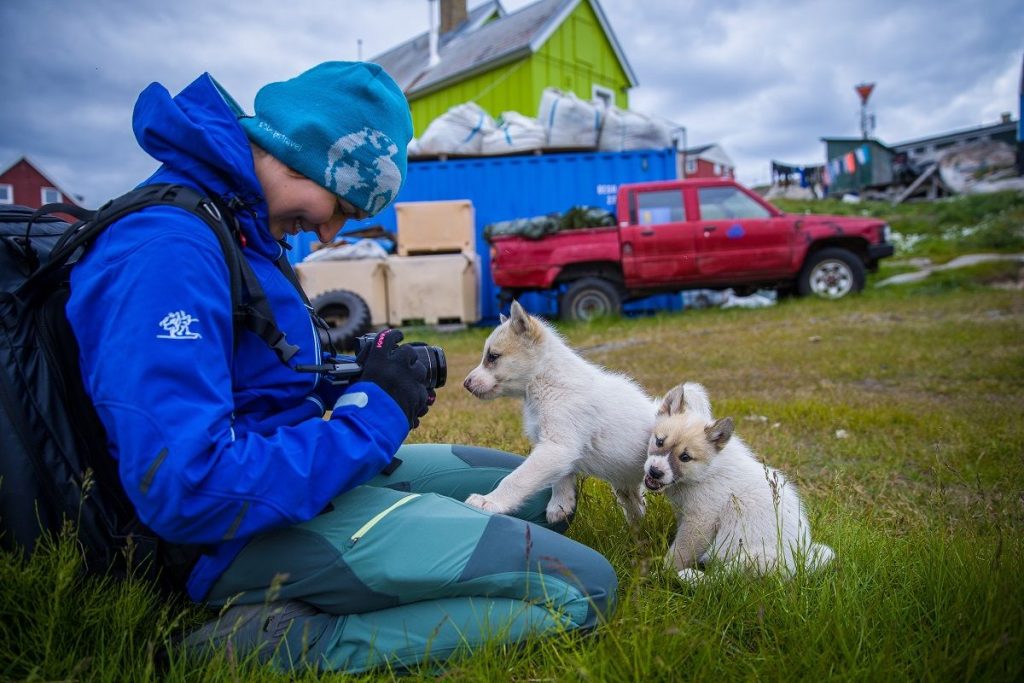




I always have a problem explaining where I come from. I am of Ukrainian descent, was born in the Russian Far East, grew up in Kazakhstan, and lately have been living in New Zealand, Singapore, and Norway. And the most confusing part? My heart always belonged to the Arctic and only after I started traveling to some of the most remote regions in the north, I found my true self.
During the Soviet Union times my family lived in Kazakhstan, the land of vast steppes and deserts, where the temperatures in the summer get as high as 50C. My mother always had this dream of going as far North as possible, she was attracted by how remote and unexplored the Arctic region was. Therefore, one day in the 1970s she just packed her bags and flew to Magadan, a small settlement on the shore of the Arctic Ocean in the Russian Far East. A decade later I was born there; shortly after my family moved back to Kazakhstan.
But the Arctic never left my mother’s heart. My nighttime stories were legends of Russian Eskimos. I still remember the old books with illustrations of igloos, polar bears, whales, seals, northern lights, and Icebergs.

Iceberg during Midnight Sun, Ilulissat Icefjord, Greenland
Many years later I became a professional photographer and my work took me all over the world. But not North enough. After meeting my husband and fellow Nature and Wildlife Photographer Karim Sahai, I joined him in leading Photography Tours in Norway, Iceland, Svalbard, and Greenland. That’s when I started feeling like home.
When I drive through a snowstorm in Svalbard, I remember my mom telling me how some winters she had to miss work because the wind was so strong, that she couldn’t walk out of her home.

When chasing the famous Northern Lights and sometimes spending hours in freezing temperatures, I hear my mother saying “During the Polar Night (6 months with no daylight) Northern Lights were so strong and bright, many people couldn’t sleep and hung blankets over their windows at home”. What an irony!
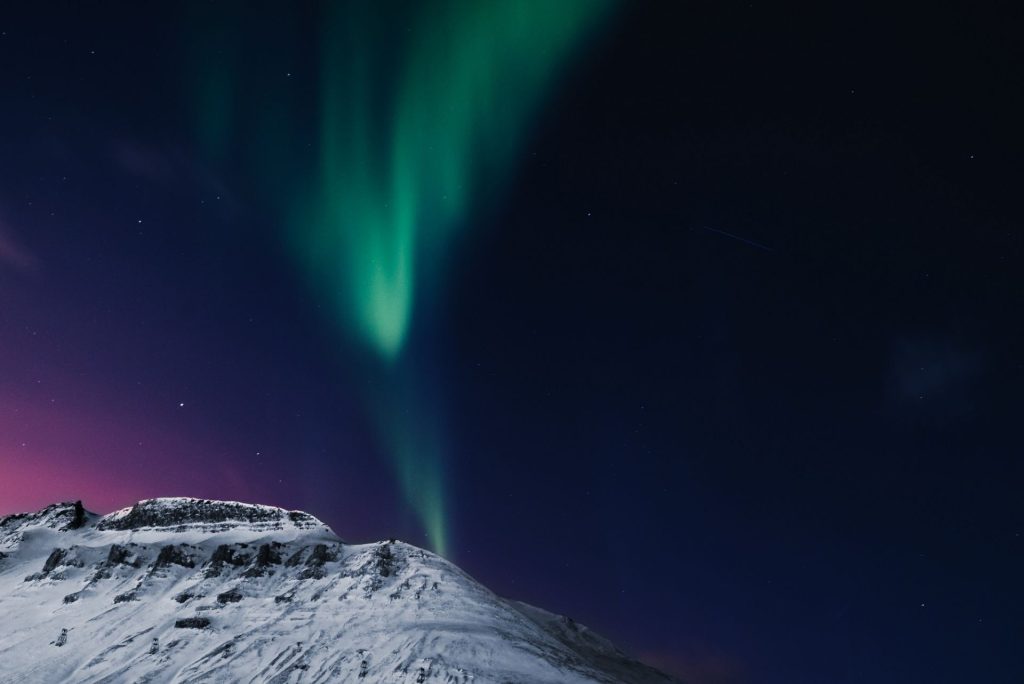
Of all the countries that I organize Photography tours to, Greenland is my favorite. Greenlandic people are closely related to the indigenous population of the Russian North. They share many common legends and customs. Growing up with similar stories, I learned how to respect ice and snow and how to treat Mother Nature as a living creature, with care and gratitude for all we have.
Back when I was a child we didn’t have internet and I couldn’t google how Arctic landscapes looked like. All I had was old soviet books and my imagination. But when I first landed in Greenland, I realized that nothing could have prepared me for the grandness of the icebergs and the purity of the ice.
During his summer breaks from university studies, Brandon lived out of his car and worked in Jackson, Wyoming, where he wandered and photographed the Tetons during his time off. His time spent there became a pivotal experience to his personal style and photographic technique. He pursues realism in his images, seeking to share the moment as it really was, rather than modifying them into surreal works of art. “God’s in charge of the sunrise, I’m just here to capture it,” has become his mantra. His journey through Switzerland inspired him to add videography to his work that he hopes will entertain, uplift, and encourage his viewers to explore the endless beauty this world has to offer.
Brandon Neubert 
It is at this point that I am presented with the daunting task of summarizing an entire trip within a single blog post. How does a person begin to describe the experiences he had with his brother over the course of two weeks, 130 miles and 30,800 feet of climbing?
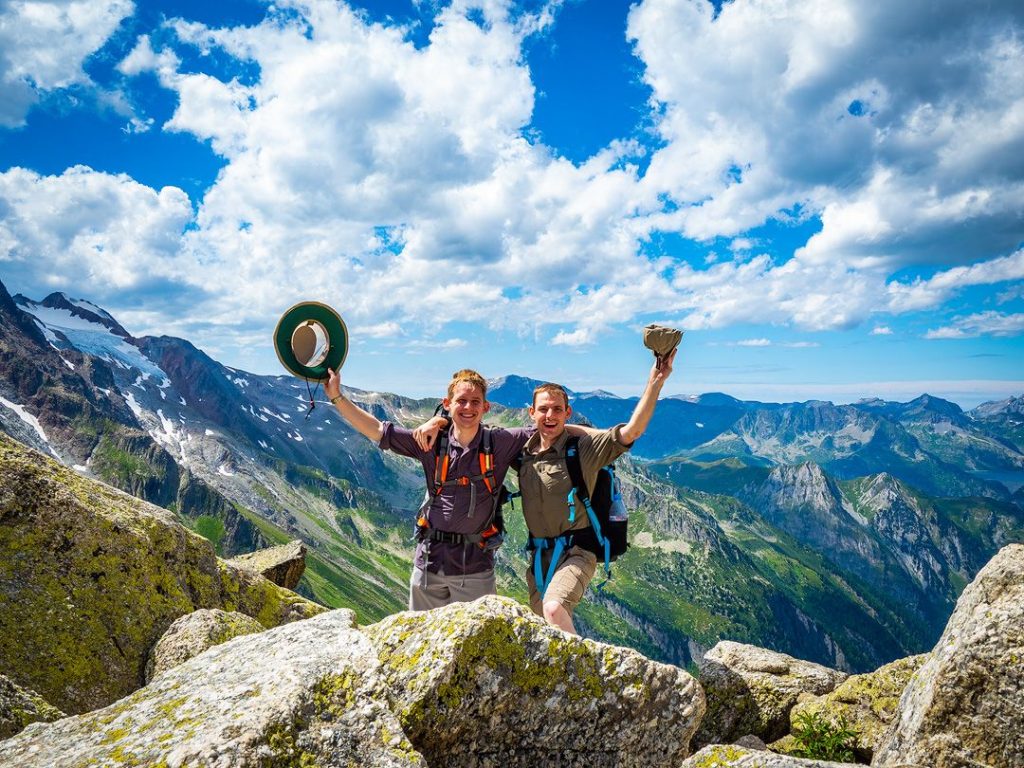
My brother and I began planning the trip together not long after I learned about the Haute Route – a rugged and solitary trail stretching and winding from Mont-Blanc Chamonix, France to the Matterhorn in Zermatt, Switzerland. For Christmas, I presented my brother with a copy of the guidebook we would be using during the trip and we got to work. Several months later we experienced the surreal feelings of our trip becoming a reality, as we boarded our flight and began our journey.
My name is Brandon Neubert. To put it simply, I’m a guy who loves to travel and photograph beautiful things along the way. My favorite photography comes in the form of big prints and wide panoramas. Having traveled to Switzerland before, I’m no stranger to its spectacular beauty. Selecting the Swiss Haute Route as our adventure was an easy decision to make and one I do not regret! I wanted to make this trip different and more unique than others I have gone on before. I decided to put in the effort to film our adventure as best I could. The result is this film, “The Haute Route: A Cinematic Journey through the Swiss Alps.” The positive feedback I’ve received and the enjoyment of creating the images and film has encouraged me to do it again.
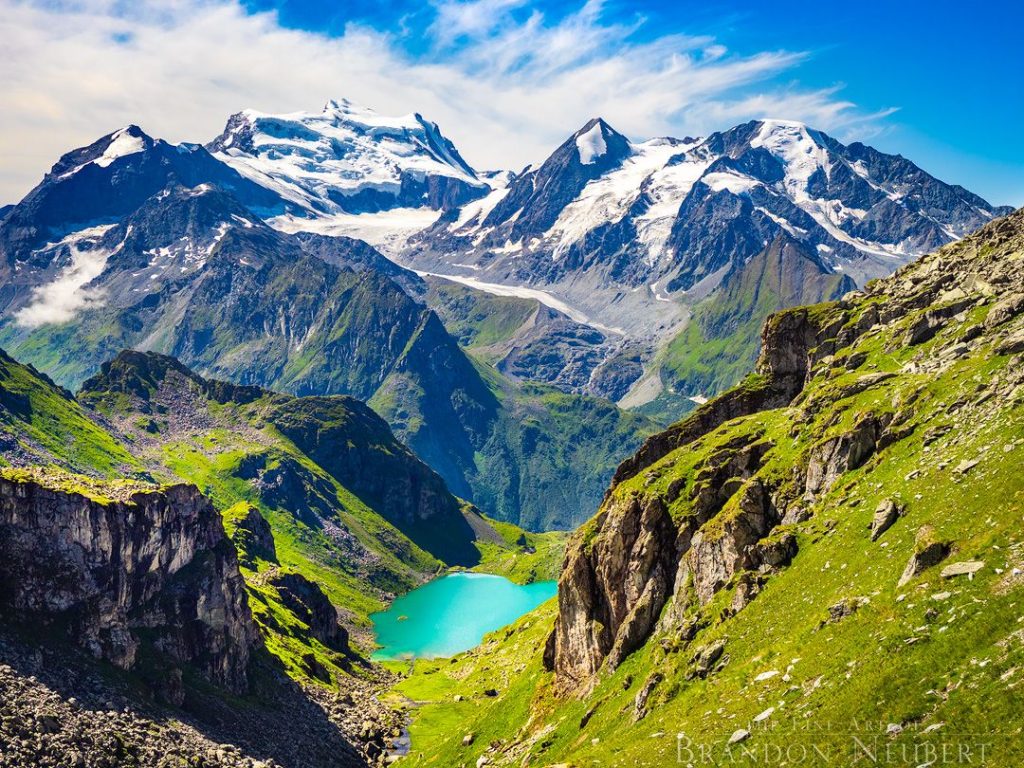

Our journey was blessed with relatively few challenges. We knew the rain would be an adversary and did our best to prepare for it accordingly. We purchased lightweight raingear and quick-drying clothing for the trip. It did indeed rain, and we were grateful for the gear, plastic bags and other items we brought along with us, and my Loka UL pack and rain shell were integral to staying dry! Fortunately, all my necessary camera equipment is weather sealed (and even waterproof in some cases), and I was unafraid of using it even during the wettest conditions.
This was also the longest trek I have ever endeavored to complete, and while I worked to make sure I was physically prepared for the steep ascents, I wasn’t completely ready for the descents. I experienced occasional problems with my IT band, and halfway through I had to rigorously rub it out in the evenings to be ready to endure the next day of hiking. So far as I was diligent and careful, each day was comfortable.
Despite the occasional rainstorm or physical discomfort, our expedition was an absolute joy! Each valley we crossed into presented new opportunities and landscapes to photograph and was uniquely different from the previous. Every day presented a new adventure as we hiked through brilliantly colored meadows, passed families of feeding Ibex, scaled cliffside bolted ladders, and crossed fields of ancient glacial ice. I found myself stopping frequently on the trail to capture every scene from another perspective or with different lighting. These pauses allowed me to take in the scene and really enjoy myself along the trek. The nature of photography creates a slower experience and helps me savor each moment. I had to be careful not to take too long though! It’s easy to get distracted for too long when you still have miles to cover.

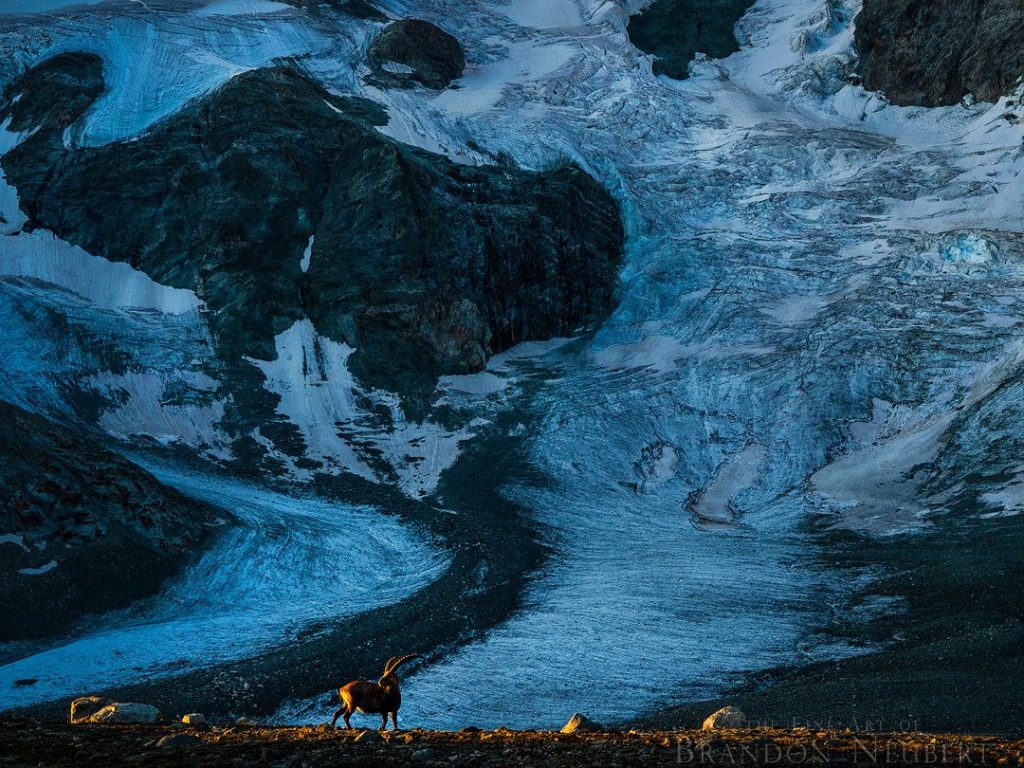
My favorite moments of the trek happened in Zermatt. The light was dynamic, and the rising and setting sun transformed the Matterhorn from moment to moment. One evening after a completely overcast day, I was shocked halfway through dinner when I looked out the window at the Matterhorn and saw a surprisingly phenomenal sunset. Abandoning my dessert, I rushed out the door with my equipment and ran as fast as I could to create the image I had composed earlier. The resulting image was, without a doubt, one of the finest of my entire journey. Surprises like this happened frequently, such as capturing the first morning light on an Ibex, having the clouds part over a lake, or discovering a full moon over Mont Blanc.
In the future, I plan on completing more long-distance treks like this one. I am so grateful to have had my brother with me, as we fed off each other’s companionship and enthusiasm for the journey. I learned a lot about filmmaking and on-the-run video work, and learned how to use equipment such as the drone effectively and efficiently. Some of my future treks will include areas of the world such as Tibet, Japan, the African plains, and Patagonia. Thank you for joining this adventure through my work, and I hope you gained an appreciation for the spectacular sights and sounds of Switzerland as much as I did while completing this project.

Jeff Caverly is a Michigan photographer that enjoys exploring the Great Lakes State and capturing the natural beauty that it has to offer. Some of Jeff’s favorite destinations are the forests and lakes of Northern Michigan, the Upper Peninsula and the downtown Bay City area near his home in Essexville. Jeff has been published in numerous print and calendar publications such as: The Traverse Magazine, Michigan Out of Doors magazine, Michigan Natural Resources magazine, Family Christian Bookstores, Independent Bank and Midwest Living Magazine.
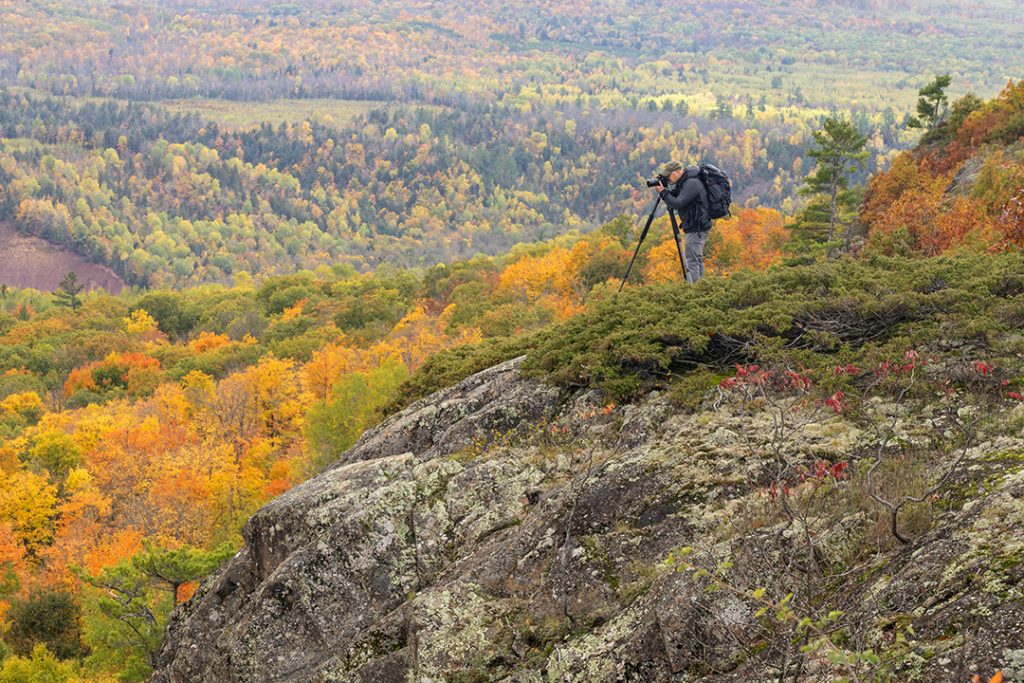
What happens when four photographers meet up in the wilderness of Michigan’s Upper Peninsula? The result is fun, inspiration, comradery and great memories that were made while capturing photographs while trekking through the wild and scenic U.P.
During the first week of October of this year, I met up with photographers Aubrieta Hope, Craig Sterken and Neil Weaver to spend a week photographing the fall color season in Michigan’s Upper Peninsula. Our photographic journey took us from the Porcupine Mountains Wilderness State Park to the Lake Superior shoreline along the Pictured Rocks National Lakeshore. Throughout our explorations, we photographed waterfalls, sunrises, sunsets, shorelines, rivers, and forest overlooks. Michigan’s Upper Peninsula offered endless photographic opportunities and gave me a great sense of place in the North Woods.

Excited to begin our journey, our first adventure was a hike up a steep, muddy trail to an overlook to photograph the sunset at Lake of the Clouds in the Porcupine Mountains. This sunset provided a great view and the evening kicked off a fun week of exploration and adventure.
Over the next three days, we photographed vibrant sunrises and sunsets along the Lake Superior shoreline and took in breathtaking views of Lake of the Clouds in the Porcupine Mountains Wilderness State Park. The Porcupine Mountains encompass almost 60,000 acres of spectacular wilderness making this a great photography destination.


After photographing in the Porcupine Mountains, we worked our way east into the heart of the Upper Peninsula reaching Lake Superior in the Marquette and Munising areas. Our trip was rewarded with a stormy sky at sunrise with an impressive early morning lightning show out over Lake Superior. Our last evening of shooting together was at the Pictured Rocks National Lakeshore, which is composed of towering, colorful, mineral stained sandstone cliffs that extend 42 miles along the Lake Superior shoreline. A spectacular final sunset on the beach made for a great final night of the trip.
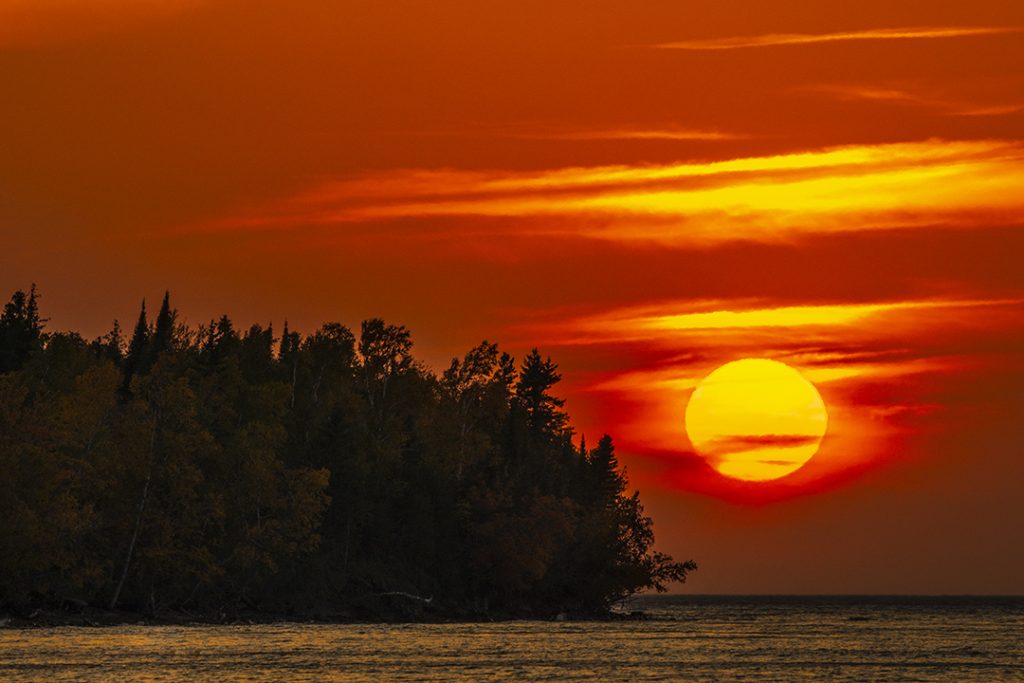
Taking a great photo trip like this offered me some time to slow down and reflect about my photography. Usually, I like to photograph alone when I am shooting nature, but I thoroughly enjoyed having a group of friends on this trip to Michigan’s Upper Peninsula. Shooting together during this photo trip allowed us to share ideas, compositions, learn new skills, and to venture off the beaten path a little farther than we normally would have if we would have been photographing alone. I think it also gave each photographer a little more confidence and comfort to explore and relax while being away from home.


Some of the most enjoyable times during this trip were the times between shooting the different locations or while waiting it out for the weather to change. During these non-shooting times, it was great to have friends to talk photography, tell stories, and sometimes just make fun of each other! The conversations also instilled a sense of excitement and optimism for what we were going to photograph next.
As our weeklong adventure came to an end, I found myself looking forward to planning my next adventure in Michigan’s Upper Peninsula. I hope to return this winter to capture some of the beauty of Michigan’s Upper Peninsula covered in a blanket of fresh snow. Maybe, if the stars align just right, I can hopefully meet up with some photography friends again.

The October weather in Michigan’s Upper Peninsula is ever changing so we always take extra precautions to protect our photography gear. During our weeklong trek around the Upper Peninsula, we all carried our photo gear in f-stop backpacks.
Craig and Neil both carried their gear in Tilopa backpacks which gave them room to pack their photography gear along with extra jackets and rainwear. Aubrieta hiked with her Kashmir UL backpack stuffed with camera gear, along with so many extra gadgets, it would have made MacGyver envious. I carried a camera and four lenses along with rain wear in my Lotus backpack. Neil and Aubrieta are both F Stop Gear Brand Champions.
You can find all of Jeff's work on his Website, Instagram and Facebook.
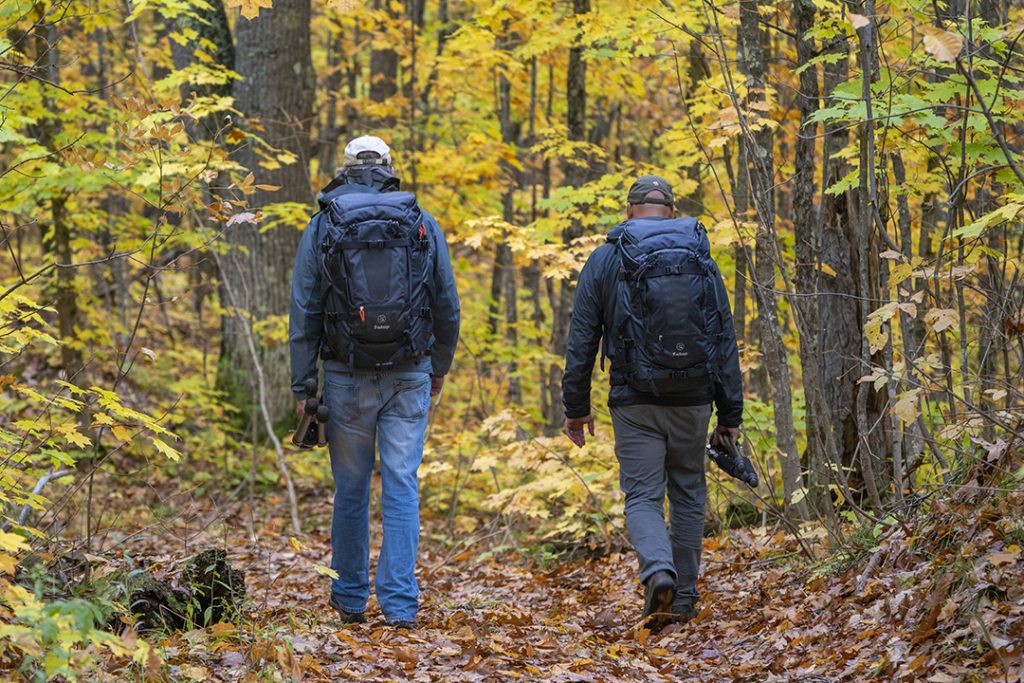

During his University path in Cultural Anthropology, Gianmarco started a project about Intercultural Education to teach people how to develop inclusive and empathetic thinking, to avoid any racist drifts. Today, after some years without his camera, he decided to bet on a new challenge: to mix his knowledge and skills in Anthropology, Education, and Photography, to tell stories to defeat ethnocentric and racist thinking.
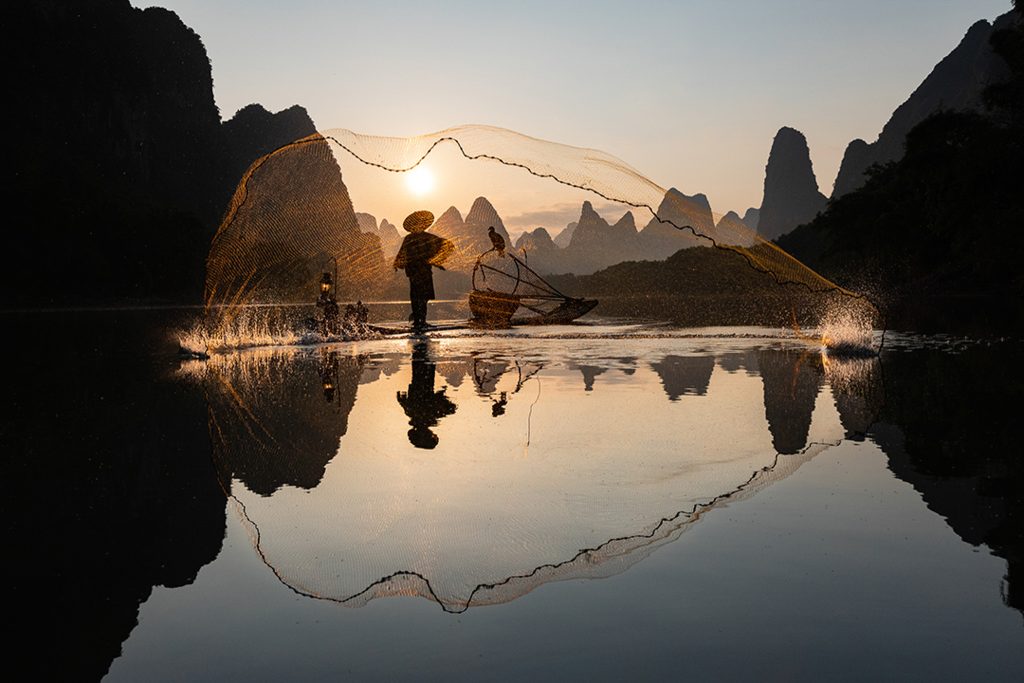
As an anthropologist, I am always interested in everything concerning culture and cultural changes. I am deeply committed to the idea that we can learn from others. How they live, what they do, and what they think opens our minds to new ideas and teaches us to be more empathetic and inclusive. During my last trip to China, I learned of cormorant fishermen and how their lives changed in recent years. They no longer support themselves according to their ancient tradition of using the cormorant for fishing. Today, tourism provides most of their income.

The cormorant fishermen fished for centuries, until socio-economic transformations, environmental degradation, and different cultural changes forced them to rethink their jobs. For example, due to new technologies, fishing with cormorants is not the best option. So, the fishermen adapted to a rise in tourism. The fishermen now show how cormorant fishing works, and they pose for tourist photos. Among the fishermen, I observed one man who specialized as a subject for professional photographers. Another man promotes himself as a professional model for photoshoots. All of the fishermen continue to wear traditional fishermen’s shoes and clothes. They come with their cormorants and catch fish the traditional way. However, they don’t sell their catch at the market anymore. They know how to pose for photographs, and they have learned some English words to better satisfy the requests of interested tourists.
You may think we have lost a deep tradition and they are not real fishermen anymore. You could say that it is just a tourist show and it is not authentic. But, according to the idea of non-static culture and identity, there’s no loss; there is a new and authentic cultural tradition driven by the world’s changes. These old men, once fishermen, have become today’s models and tourist educators. This is a new cultural tradition because all culture is connected in space and time. People adapt and change to the environment, thus culture changes.
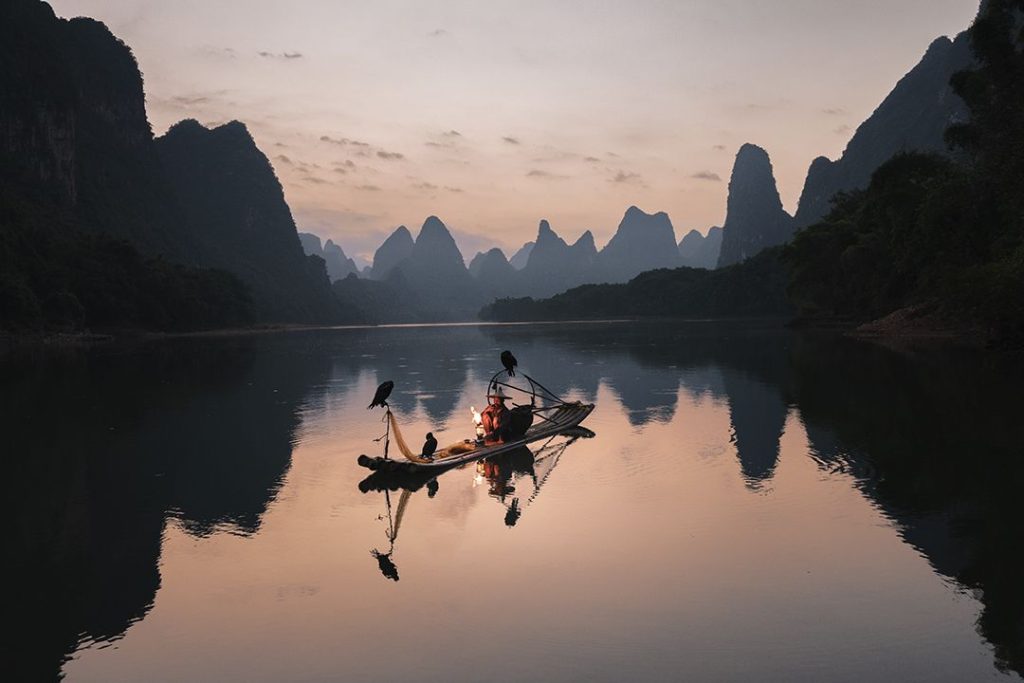
A very important goal that I always keep in mind during my work and my life is to teach people about the dynamic nature of cultures. Once we understand, we can develop a critical thinking approach that embraces cultural change. Once we understand the life changes of the cormorant fishermen, we can learn to tell their story, and their amazing story allows us to speak about these topics and promotes empathetic thinking.
This trip to China was very important to me. It was the first time to test my new gear directly in the field. I invested time, money, and dreams to bring home memorable pictures of my new life based on what satisfies me - photography. I traveled with my partner Giulia Cerri. She is an anthropologist, too. Since 2015, we have worked together in the field of anthropology and intercultural pedagogy. We are involved in social science research and do fieldwork with Italian schools from grade schools to Universities. We like to inspire critical and empathetic thinking in young students as a means to a better future.

The biggest challenge of this Adventure was to prepare to walk long distances while carrying 12 kg on my back every day for long periods. I trained myself during the previous months to get used to carrying this weight without any problems. In the beginning, I was using a backpack not suited for trekking, and I had some pain and discomfort. Then I switched to the Tilopa backpack and everything went perfectly. When I use the Tilopa, I can walk and trek for long distances without even feeling the weight. For sure, if you want to enjoy your adventure, you must be well-equipped and well-trained, both physically and mentally.
Sometimes the best experiences are completely unexpected. We were in Fenghuang, an ancient city in the Hunan Province. The place was beautiful, but there was too much of a crowd that day. We decided to move away from the city center and started climbing a mountain path made of steps. After a long walk up the mountain, we reached a Buddhist Temple. We entered and sat down to rest. Inside there were five women and two monks. After a couple of minutes, one of the women came over to us and, speaking by gestures, asked us to join them for lunch. We were incredulous and amazed. “Of course,” we said. We began to help her in the kitchen. She was speaking Chinese and we were speaking English, but somehow, we understood each other.
When the lunch was ready, the youngest monk rang the bell and we entered the dining room. After different rituals and different prayers, the women served the monks first and then the others. Finally, the women sat and joined us. We had the most delicious meal of the entire journey. We had handmade green noodles with vegetables, mixed sautéed vegetables (soya beans, eggplants, and local white beans), a soup with a local herb, a dessert made of dried fruit and rice, and finally some fruit. Out of respect, we didn’t shoot any pictures or any video; we just enjoyed the moment. However, after lunch, we asked everybody to take a picture together, outside the Temple and they agreed. What a special and memorable day!
We were hiking in Zhangjiajie National Forest on a sunny day when suddenly the weather changed. In a couple of minutes, the sun disappeared, and then came a real downpour. When you travel, the rain can be a pain in the neck, but if it happens when you are in Zhangjiajie National Forest, it will be an amazing experience. Why? Because after the rain, the mountain peaks appear and disappear behind the clouds. When that happened everything stopped, even time. The scene looked like a fairytale. By the way, Zhangjiajie National Forest is the place that inspired James Cameron for his movie “Avatar”.

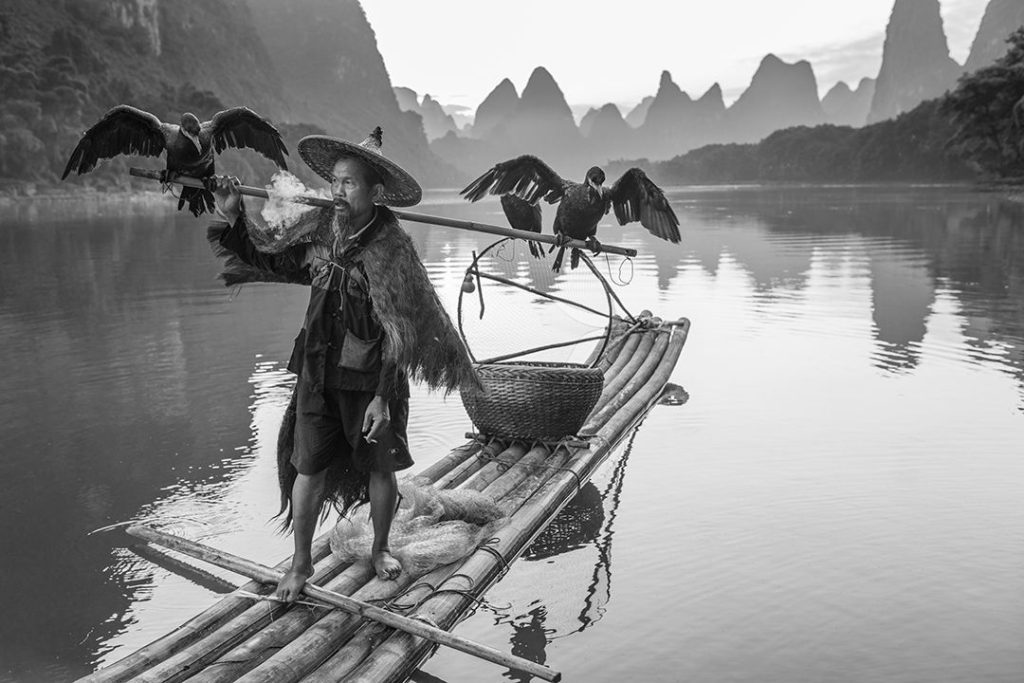
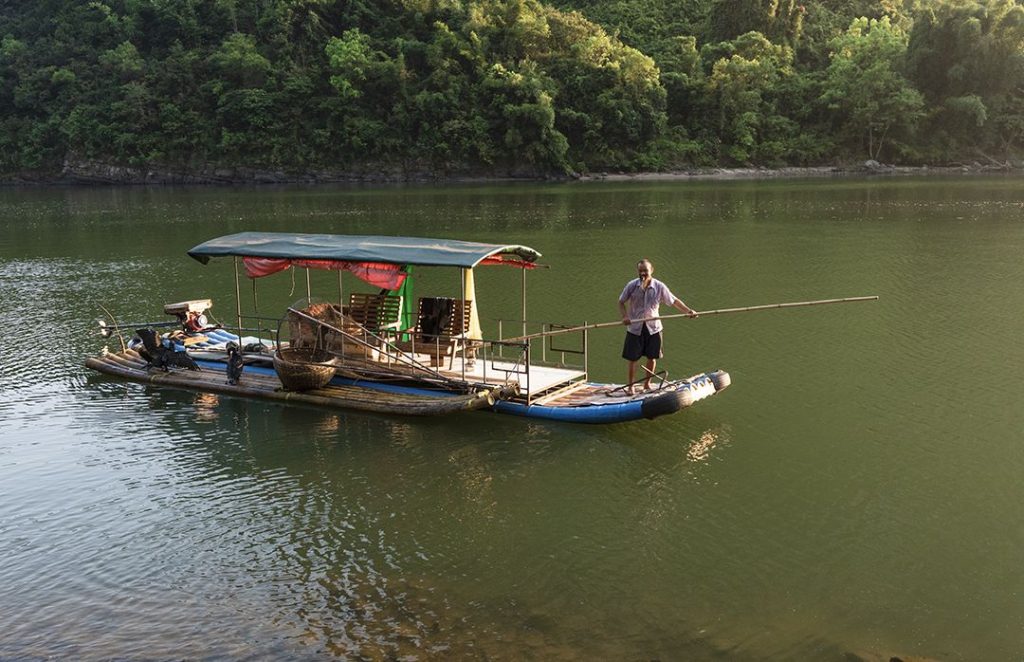

After having tried to shoot everything, I have found what makes me crazy: landscape photography. I could spend hours reaching the place I want to shoot and stay hours trying to shoot the best pictures in that place. No matter the heat , no matter the cold, no matter anything else; when I get the flow, there is nothing that can distract me from the camera. When I discovered landscape photography, I began to feel free of myself, and now I can’t live without that sensation. I also love to shoot pictures that can inspire and educate people to the idea of equality among human beings. That’s why I am trying to mix my skills in anthropology, education and photography to reach this goal.
I am trying to start a project about teaching cultural diversity and empathetic thinking through photography. I am looking all over the world for stories that can tell how cultures are always changing and are not fixed and pure. That’s important to understand to avoid any ethnocentric and racist drifts. With these stories, I want to write a book about culture. There are books about this subject, but they just show the cultures without speaking about the dynamics involved. They are not written from an anthropological perspective. I am also working to set up photographic tours and workshops. Teaching, traveling and photography makes me feel alive. Finally, I am also very interested and fascinated about wildlife photography. I would like to try it. I would like to use wildlife photography to explore the dichotomy between nature and culture, to show that culture is present even in the animal kingdom.
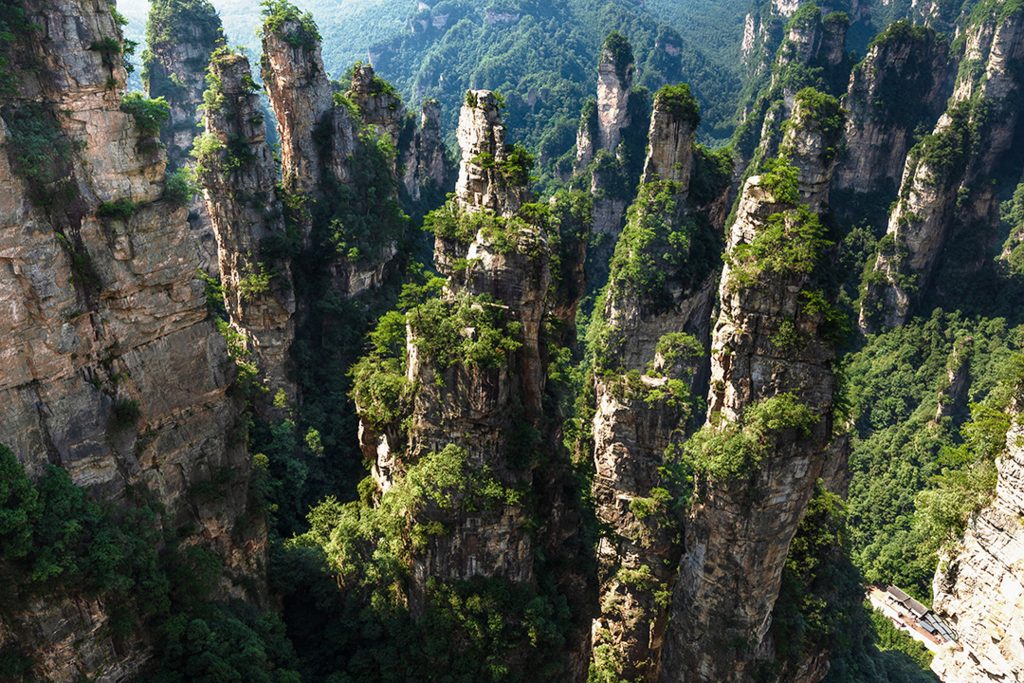
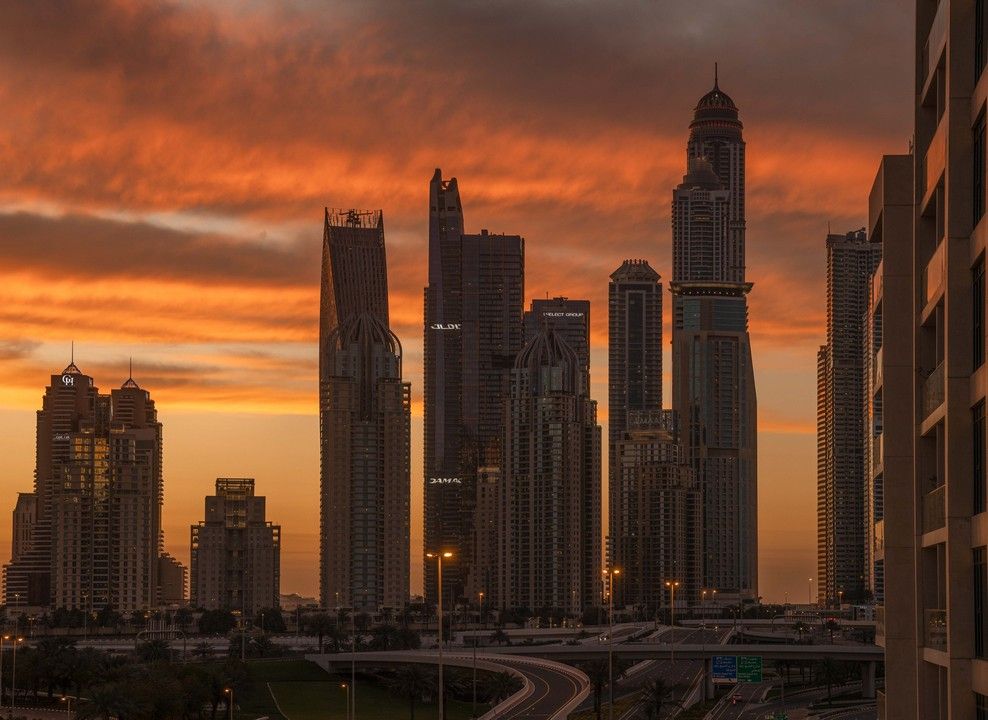
Dany Eid, 45 years old, married & living with his wife in Dubai. He is professional photographer, specialized in landscape & architectural photography. Born and raised in Lebanon, studied interior design and painting. He is passionate to travel exploring the world and runs different workshops sharing his experience with those who are starting out as hobby photographers, might remain hobby photographers or follow their dream and take it to the next level. Dany is a Carl Zeiss global Ambassador & part of Nikon school Middle East & North Africa.
f-stop: How are you keeping up with the current situation? What tools are you using to “normalize” your life considering all the changes caused by coronavirus?
Here in Dubai & since implementing the curfew or a partial lockdown, I have been working more on sorting my photography archives & post processing old images, that were forgotten. I was quite surprised & happy to stumble upon old memories related to images I shot. What I missed the most is leaving the house at sunrise or sunset (my favorite shooting timings) to shoot. I started appreciating my balcony more & more & it became my one & only shooting location. I’m lucky to have a good view & was eve luckier with some great sunsets & a thunderstorm (they don’t often happen un Dubai), where I was able to capture the thunder.
f-stop: Do you have anyone close to you who works in healthcare? How has their lives been impacted?
Not really, the only one I know working in the healthcare section is a dentist, who is taking all possible measurements including protective gear, while treating a patient. It’s quite challenging for him. However life goes on.


f-stop: What are you doing to improve the situation in your community, your family, or your surroundings?
I would say everyone is dealing with the situation in a different way, some are quite pressured & others are cooping & dealing. The most important thing is to respect each other & not to underestimate other’s fear or anxiety feeling. On the contrary maybe give a helping hand & draw their attention to how they can fill up their time doing something creative. As a photographer I would recommend to make use of your camera, not necessarily your professional camera, but any camera you have. Cook & shoot your food, look out of your window or balcony, check out the view. If you have a garden or plants capture a picture then check tutorials, work on old images you once took, compare old & new images you took. I just came across one of the first images I shot years ago & would very much like to re-capture the same lighthouse again. I’m sure the image will be different
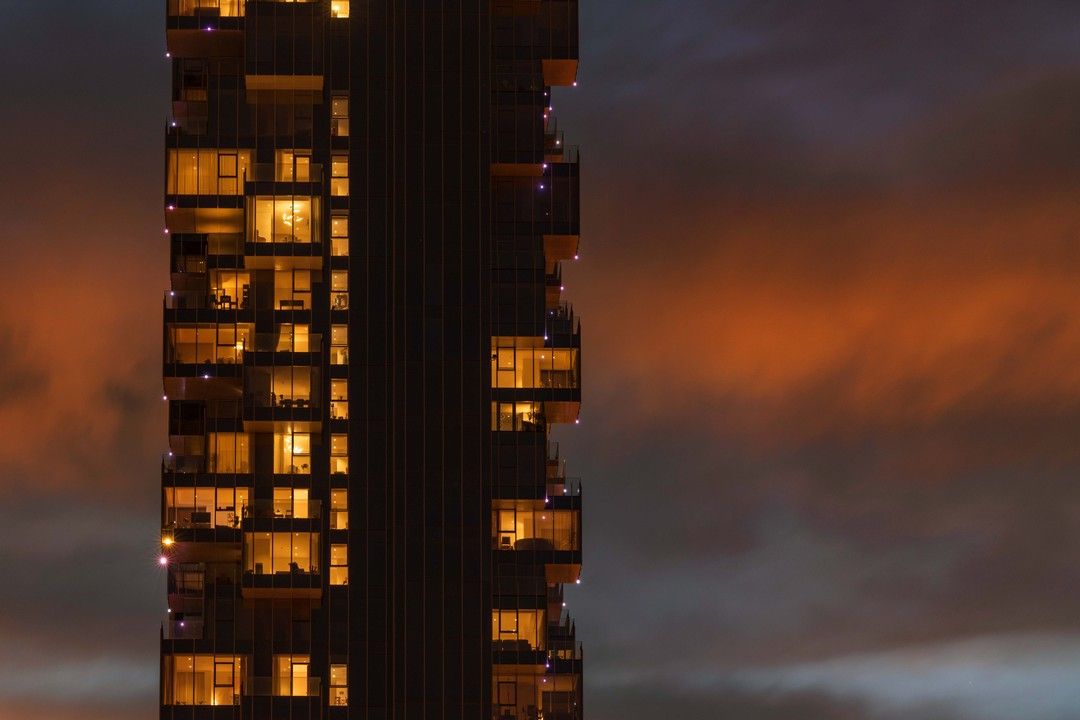

f-stop: What tools did you use for post-processing the old photos you found? Are you planning on publishing those?
I used Adobe Photoshop. I regularly post my images on Instagram, especially when I come across old images that bring good memories. The images that I am referring to can be found on my Instagram.
f-stop: What's your plan for the near future / do you have anything special you'd like to achieve in the coming period?
I would start with what I miss the most during the pandemic crisis & that is traveling. So once the border restrictions are lifted, I would like to ride in my car Obelix & travel. I almost got stuck in Saudi, where I had my last trip before the border closure, exploring the Saudi desert & planning for the launch of new photography overlanding workshops. So until the borders open, I’m exploring my destinations & mapping the routes & stops I would like to take / visit.
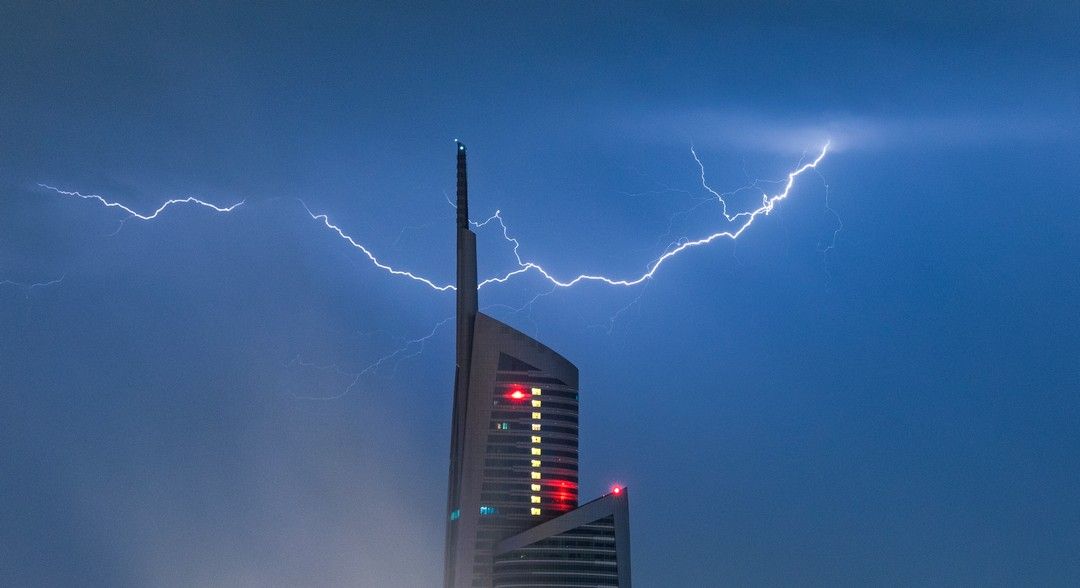
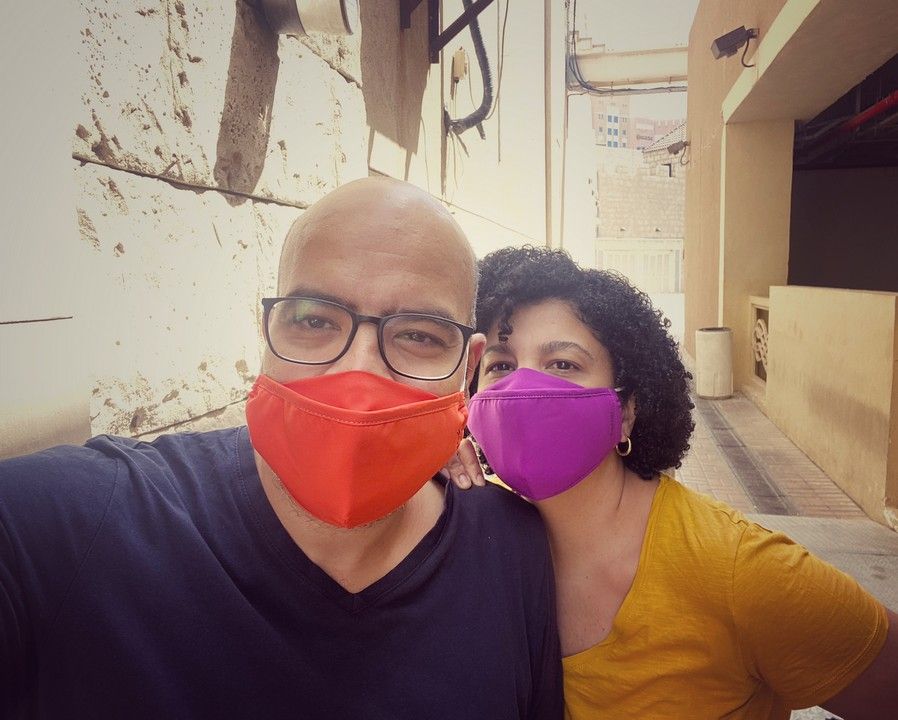


Discount Applied Successfully!
Your savings have been added to the cart.